

Your Contact Details
Back to blog home.

101 Must-Know Transition Phrases for Engaging Presentations Online
By Paola Pascual on Jan 17, 2024 1:43:00 PM
Giving presentations is often feared by many professionals, but if the presentation is online and you're not a native speaker, things get even trickier. One tip to make things easier? Learn useful phrases to help you navigate your presentation. In this article, you will find lots of helpful resources to give remarkable presentations . Listen to the episode above, download the checklist below, and learn some of the phrases we present. If we missed any, tell us in the comments below.
General vocabulary for presentations
Sometimes, the smallest changes in your presentations can make the biggest differences. One of them is to learn a few phrases that give you confidence during your speech. Here are some important verbs to get you started:
- To highlight
- To emphasize
- To walk you through (*very common in business presentations!)
- To send around
- To carry on (similar to continue)
- To get carried away
- To sum up (similar to summarize )
- To focus on
Vocabulary to start your presentation
Learn how to powerfully start your presentation with these 4 simple steps. Here's some vocabulary you can use:
Welcome your audience
- Good morning/afternoon/evening everyone. Thank you for joining us today, and welcome to today's webinar.
- Hello everyone, I’m very happy to be speaking with you today.
Introduce yourself
- My name is Susan, and I’m part of the design team here at Globex Corporation.
- First of all, a little bit about my background - I am the Team Lead at [Company], and I've been in charge of [your main responsibility] for [X] years.
- I'd like to tell you a bit about myself - my name is Eve I'm the Operations Manager here at [Company].
Introduce the topic and goal of the presentation
- Today, I'd like to talk about…
- This presentation will take about [X] minutes, and we will discuss...
- We've allocated [X] minutes to this presentation. and I'll talk about...
- I'd like to give you a brief breakdown of...
- I'd like to take this opportunity to talk about...
- The main goal of this presentation is…
- The purpose of this presentation is...
- My objective today is...
Read these 5 tricks the best public speakers use to captivate their audience .
Addressing questions from the audience
- If you have any questions about anything, feel free to interrupt.
- If anything isn't clear, please click on the 'raise hand' button and I'll do my best to answer your question.
- I'd be happy to answer your questions at the end of the presentation.
- If you have any questions, please kindly wait until the end to ask them. We will have [X] minutes for a Q&A session at the end.
- Since today's audience is considerably large, we will not have time for questions, but please email me at [email protected]
Learning new English words is not easy, but you can achieve effective communication through practice and repetition. If you are a Talaera student, visit the Library to practice your vocabulary for presentations. If are not part of the Talaera community yet, learn how we can help you here .
Clear out technical issues
- Can everyone hear me well? Let me know if you encounter any technical difficulties throughout the presentation.
- If you are not speaking, please put yourselves on mute.
- If you feel that the sound quality is poor throughout the presentation, please let me know.
Transition to the main topic of the presentation
- Hi everyone, I think we might still be missing a few people but I’m going to kick things off now so we have time to get through everything.
- All right, let’s dive right in!
- All right, let’s jump right in!
- Let’s get started.
- Let’s kick things off.
- I’m going to talk about
- The purpose/subject of this presentation is
- I’ve divided the presentation into 3 parts: In the first part, ... / Then in the second part, ... / Finally, I’ll go on to talk about...
- Let me begin by looking at...
- Let me start with some general information on...
Vocabulary for the main body of your presentation
Introduce a topic or section.
- Now let’s move to the first part of the presentation,
- We can see 4 advantages and two disadvantages. First,
- On the one hand… On the other hand…
- There are two steps involved. The first step is… The second step is…
- There are four stages to the project.

Transition to a new section
- All right, let’s turn to...
- Now we come to the next point, which is
- Okay so that’s [topic 1], but what about [topic 2]?
- There’s a lot more to talk about, but since we’re pushed for time , let’s move on to [topic 2].
- This leads me to my next point, which is...
Give examples and details
- For example...
- A good example of this is...
- To illustrate this point...
- This reminds me of...
- To give you an example...
- Let me elaborate further on...
Describe visual aids
- As you can see [from this infographic]
- This chart shows
- If you look at this graph, you will see
- From this chart, we can understand how
- Let me show you this [image, graph, diagram]
- On the right/left
- In the middle of
- At the top/bottom of the picture
Emphasize an idea
- This is important because
- I’d like to emphasize that
- We have to remember that
Repeat the same message with different words
- In other words
- To put it more simply
- So, what I’m saying is that
- Let me say that again.
It's easy to get stuck in the middle of a presentation, especially if English is not your mother tongue. Here are +20 Top Tips You Need To Know if you're learning business English .
Finish your presentation and summarize
The end of a presentation, together with the opening, is one of the most important parts of your speech. Read these 5 effective strategies to close your presentation and use the vocabulary below.
- That’s all I want to say for now about [topic].
- To sum up, ...
- This sums up [topic].
- So in a nutshell, ...
- So to recap, ...
- In brief, ...
- To conclude, ...
- I’d like to conclude by emphasizing the main points...
- That's it on [topic] for today. In short, we've covered...
- So, now I’d be very interested to hear your comments.
- And this brings us to the end of this presentation. I hope [topic] is a little clear after today.
- So to draw all that together, ...
Start and navigate the Q&A session
- Thank you for your attention. I hope you found this presentation useful, and I'd be happy to answer any questions.
- Thank you for listening. We now have [X] minutes left. Do you have any questions?
- Thank you for your question, [Name].
- I'm glad you asked.
- That's an interesting question.
- That's a great question, I must say. I'm not 100% sure, but off the top of my head, I can tell you that...
- Are you asking about [topic 1] or [topic 2]?
- Can you please clarify what exactly you mean by [question]? I'm not sure I fully understand.
- I'm afraid I don't have the exact figures at hand, but if you give me your email address at the end, I can follow up with you later.
- Does that answer your question?
- I hope that makes sense. Is that the kind of answer you were looking for?
Take your presentation skills to the next level.

Keep reading about presentation skills:
- 21 Helpful Tips For Remarkable and Outstanding Presentation Skills
- How To Start a Presentation: Follow These 4 Easy Steps
- How To Bring Across Your Main Idea In A Presentation Effectively
- 5 Effective Strategies To End A Presentation
- 6 Public Speaking Tricks To Captivate Your Audience
- How To Do Effective Business Storytelling According To Former Prosecutor
- 8 Little Changes That'll Make A Big Difference With Your Presentations
- 3 Quick Public Speaking Tips For Your Next Presentation
- Your Body Language May Shape Who You Are [TED Talk Lesson]
Talaera Talks - Transcript Episode 5
- Topic : Deliver impactful presentations
- Listen : Spotify , Apple Podcasts , Google Podcasts
- Duration : 22 min.
Intro Welcome to Talaera Talks , the business English communication podcast for non-native professionals. My name is Paola and I am co-hosting this show with Simon. In this podcast, we're going to be covering communication advice and tips to help express yourself with confidence in English in professional settings. So we hope you enjoy the show!
Okay, welcome back for our third episode of Talaera Talks. This is Simon, and I'm joined with Paola. Paola, how are you doing? 0:37 Hi, Simon. I'm great. Happy to do another episode. 0:41 Yeah, absolutely. And Happy Friday. 0:44 Happy Friday! 0:49 So today, our topic: Presenting in English. I'd like to start this episode with a quote I found on Harvard Business Review that I thought was really interesting. It says, "Even native English speakers often anticipate disaster when making presentations. By but for non-native speakers, the anticipatory and situational anxiety associated with their unique challenges (these challenges - being understandable, choosing the right words, speaking spontaneously), can be overwhelming. Moreover, if these concerns interfere with your willingness or ability to make business presentations, the impact can be career-limiting." So yeah, that's a pretty kind of heavy quote to start. But it is something that we see from a lot of our clients, right? 1:52 Yeah, it's super interesting. It was super interesting to read. It's something we know, but it's important to remind it that it is presentations, the topic we have today is something that is not pleasurable for anyone, not for non-native speakers, but also for native speakers. So that's something to point out. And today, we talked about that... We said that we wanted to start with those challenges or fears that we see from our clients, our learners. 2:25 Yeah, and it's usually around the same things, you know, we, at least for me, I come into contact with so many of these, so many of our students who are so competent in their, in their daily lives, what they're doing in their professional lives. And they come to me with these with these fears, like this just general lack of confidence, or imposter syndrome, right? This I don't know if I really deserve to be speaking and, you know, kind of explaining this concept to all these people. 3:05 Mm-hmm. Yes. And also the fear of not being understood, well, they know what I'm saying, well, they understand my accent. There's a lot of worries and concern around accent and our pronunciation expert, Lisa hosted a webinar, actually last week, where she explained that accent matters. But as long as people understand you, it's fine. You don't need to be perfect. Everyone has an accent. So that's also totally fine. 3:37 And this being Yeah, this being one of I think, at least for me, in my experience, one of the most frequently asked for aspects from students. So you know, and just to like, again, just say that this is a challenge for everyone, not just, you know, non-native English speakers. You know, I think all of us have a tough experience or somebody that we think of when we think about public speaking, it's, it's like this, yeah, really anxiety-riddled thing. I mean, I don't have any, you know, funny personal stories, but uh, do you, Paola? 4:20 You want me to tell my embarrassing story, don't you? 4:22 Please, you must. 4:25 So I used to teach at a university in Vietnam when I lived there, and the classes where it rains, you know, from perhaps 50 students to up to what 300 there's was a class with, you know, 2-300 students and there was a little stage it wasn't too high, but there was a little stage and I fell off. 4:46 You fell off the stage. This was during or after the presentation, or...? 4:56 It was around the beginning of the presentation. So... 5:01 During! Oh, I thought it was it was like after like you were walking off? 5:06 No, I move a lot. I use my body language quite a lot. And that was one of the moments where I overdid it, probably, and fell off. 5:17 Wow. Well, I'm glad that you're still here with us. 5:21 Yeah, you know, but that's the story that I sometimes not always tell it. But I sometimes tell it when my students say, Oh, I'm nervous, and I assume that it can happen, you know, I thought it was going to be a disaster. And then I actually ended up making friends with the students that turned out okay. 5:39 Right. Well, yeah, I mean, today, we're not necessarily going to go into the physical dimensions of how to avoid falling off the stage. But we do have some, some good tips, right? 5:54 Yes. And to provide some advice on how to deliver presentations, and lose that fear, we've divided it into three main blocks. And those are what to do before the presentation, tips for during the presentation. And then even after there's things you can do to, to get better. 6:18 Right, let's start with the first, right, what can we do before the presentation in terms of getting ready, preparing? 6:30 So preparing, it's a very general term, but one of the tips that we like to give is, think of the WHAT, WHY and NEXT. So WHAT is your presentation about? WHY should they listen to you and not look it up online (or listen to a podcast, like ours)? And in what NEXT means - what is supposed to happen next? Do they need to do anything, go on a website, send you feedback? Are you going to send them the materials? So what why our next is so straightforward and simple. But when I asked this question to our clients that are so thrown off, and they don't know what to answer sometimes, 7:10 Yeah, I think that's one of those things. And I struggle with this all the time is, when I get an idea or something like that. It's so easy to just jump over those most basic things of, you know, what, why and index, those are so, so basic, but it's such it's, they're so foundational, right? And in terms of creating something that people will understand and be able to, to really attach to. 7:41 Yep. And do you have any tips around how much you should learn? Should you write the whole thing? Or should you memorize? 7:52 Yeah, that, you know, this is a good question as well, that a lot of our learners ask in terms of, yeah, you know, I'm just going to go and write it all out. And then I'll have an idea. And I'll feel better because I can write it and change it so that it sounds more professional. It sounds like I know what I'm talking about. And I always tell people, please don't try to prepare a presentation where you're reading a script, it is just the most unnatural thing ever. And, and it, you won't end up sounding more professional, if anything, your audience is going to detach, because they're going to sense that something's not really right here, it doesn't seem genuine, right doesn't seem real, it just seems like this person is doing what he's doing, which is reading off of a script. And even still a lot of times with a lot of our learners where they know that, okay, I know this material. But I'm going to put all of my effort into making this perfect slide this perfect presentation. So I would say, focus on actually knowing the material itself really well. More than focusing on how the presentation looks, you know, these kinds of things. Because once you're in that situation where you're on the stage, and people are looking at you, at least you'll be able to Windows like kind of red Sirens of you know, panic and anxiety show up. You'll have learned the material itself so well that you can roll with that. 9:29 Yes. And you also have room for improvisation because your brain is so used to the content and you know, so well what you want to say that that's when your brain starts to come up with anecdotes and that's the fun thing that gets you hooked. And that's the main Why should people listen to you instead of reading an article online? 9:49 Exactly. Because for most of our students, you know what you're talking about. That's why you're up there. That's why you have the opportunities to speak there is because someone thinks you're qualified enough to speak to all these people. So trust in that and go with that. So yeah, so we have right not, not over learning. Don't script it right? What else can we do? 10:14 Practice, practice, practice, practice, practice in your mind, but more importantly verbalize it, say it out loud. And recording yourself is uncomfortable for everyone. But it works. I have never tried it. I always told my students should record yourself, you should record yourself and they were like, Huh. And just a few of them did it. And when we started with the webinars, I haven't done something like it before. And I said, Okay, I'll use my own tip. And it was one I'm comfortable. And two, super helpful. So if you get to go over the sound of your own voice, I would say do it. 10:54 Yeah. You know, this is one thing that I have to be totally honest here. Doing these podcasts is the first time I've actually recorded myself for a long time. And I've learned a lot about, you know, not saying the word Absolutely. 500 times, yeah, within the span of 20 minutes. So those are good learning lessons. Definitely. Okay, and then so we have that. And then the last little tip is, I would say get an English mindset before 30 minutes to an hour before the presentation. And that could be listening to a podcast, you know, like Talaera Talks, or, you know, watching a show on Netflix that's, that's in English, whatever you can do to get your kind of English mind, you know, in the zone before you go up and actually speak English. So So those are all of our kind of pre presentation tips, what you can do before, so what about during, 11:58 so for during, there's a lot of things that you can you can do to improve your presentations. But the first tip is to learn how to start to have a mind map of what am I going to do at the beginning. So you start confident already. So welcome, everyone, introduce the people introduce the topic and go to the main point, those four parts will help you have a nice start. Welcome, everyone. For example. Hi, everyone. Welcome to today's presentation. Today, we'll be talking about business events, introduce the people, you can introduce yourself , like, Hi, my name is Paula and I'm a business English instructor at Telstra, and perhaps even the audience. Today we have with us students from all different nationalities and levels, or, you know, whatever the audiences, that's also helpful for everyone to understand, introduce the topic, or give you some best practices for business emails , and a few templates, and then go to the main point. So a simple sentence like Alright, let's get down to business. So having those welcome introducing people introducing the topic and going to the main point will help you have a nice start. 13:16 Yeah, and I like that concept of that the mind map is so good. Because it's it's not the scripting, like we were talking about before, it's having a kind of a little mental checklist. So that when those first few minutes, were you're up there on the on stage, and you're like, oh god, oh, god, here we go. Here we go. You have that little checklist that I created. Okay, so I welcomed introduced the people the topic, and now to the main point, and that can get you in the zone and going I really liked that. Yeah, so so having that, that starting template. And then another thing would be, I would say slowing down, slowing it down. And this is really I think it touches on a lot of aspects. The first would be just the general anxiety, we tend to speak a lot faster when we're really anxious, you know, but by slowing down, it really helps with non native English speakers because it helps with the accent. And it helps with giving you some time to really think through your next thoughts. Now, I'm not saying that you should, while you're speaking, try to think steps three, four or five ahead of you. But giving yourself a little bit of time to Okay, I'm going through this pattern now. Now I can go to the next one, right. And doing that, you know, another with the slowing down a tip if you're really nervous to go in is prefacing your speech. So before you really get into everything, maybe after the welcome part is just to say, Hey, you know, I'm going to try to speak as clearly as possible, as English as myself. first language and really smile and maybe make a little joke about that. And I think that's a good way to open it out for the audience to show some vulnerability and and help. I mean, what do you think about that? 15:13 Yeah, I mean, we see that with, sometimes with celebrities, when they're not native speakers, and they admitted, and they, they kind of put yourself put themselves, as you said, in that vulnerable position, and that makes them even cuter. 15:28 Mm hmm. 15:29 So it's making yourself human, I think it's always a good tip. And you were saying that slowing down helps with your accent and also for yourself to gain time to really know what you're going to say. But also for the for the audience. We don't mind people making some little pulses, so that they also have time to collect their thoughts. 15:50 Right, right. Yeah. Yeah, definitely. Those are, those are two really good aspects, starting, you know, the template and then slowing down, right. Yeah, kind of diffusing the anxiety by saying, Hey, you know, this isn't my first language. And that really gets the audience on your side, right. And then another would be not reading off of your slides. I mean, this is kind of the basic, you know, what you learn in school, but it's also something that a lot of people get, yeah, get, get hooked on, just because it's like a safety net. And I would say that's where the overlearning the material that we talked about beforehand comes into play. Anything else in this? 16:42 Oh, recap for sure. After every section, do a little recap, and at the end to recap where you summarize the main points of the whole presentation? 16:54 Yeah, yeah. Good. Good. So So summarize. Yeah, yeah. And that's a that's a good, you know, I would say three aspects, four aspects that during the presentation, if you keep these in, in your mind, it's, it's, I would say, it's going to help a lot. And so now we're going to move to what can we do after the presentation? We've done it, we've walked off the stage. Whoo, I'm so glad that's over. Now, is all of our work done? No. 17:27 No, not really. That's now it's your chance to actually learn from, from everything you did. So one of the tips we suggest is try to ask for feedback. But that's not so easy, right, Simon? 17:42 Yeah, it's, I think, a big question. And that is, who do you get the feedback from? Right?

17:50 So we, we would always suggest to try and find someone you can trust someone who is honest, and who can give you objective feedback. So in some cases, that can be your manager, but sometimes it's a colleague that understands the topic, and can really provide some feedback on how you did. 18:13 Yeah. And that's, I think, in terms of learning, this is one of the most crucial thing is reflecting back on what you did, and seeing what worked, what didn't work, and how can I take that and move forward? Because especially with presenting, it's a skill, and it takes practice, practice, practice. And, and I think, for a lot of people, you should jump at the chance to do this. So that you can continue to learn and continue to grow. But be sure to reflect by Yeah, by asking for feedback and seeing what worked, 18:47 for sure. And ideally, that would be someone, perhaps from work that can see how you did and like the actual show, if not Talaera teachers also do that. So you can present your own presentation, pretending it's the actual one. And that's how we can provide feedback on the structure, the vocabulary, the language in general. 19:08 Yeah, absolutely. I do that. Oh, there you go. Absolutely. Definitely. See, I'm reflecting back and learning as we go. I'm working. I'm learning that. Yeah. But I've done that recently with a couple of students where we've gone through their deck and looked at what are their plans in terms of presenting and we've kind of gone through in detail that together. So So yeah, so that was kind of I would say the biggest thing in terms of afterward. 19:40 So we have the pre-presentation, just as a quick recap for the pre-presentation and before your presentation, always remember the what why next, what is your presentation about? Why should people listen to you and what should happen next overnight Learn the content. be super confident about what you want to talk about. But don't script it. Don't write everything down. Otherwise, it would sound like you're just reading. 20:11 Write and practice through verbalization. record yourself, even though it may be awkward, but it's a great learning technique. And then get in that English mindset beforehand by Yeah, listening to a podcast or what have you. And then during the presentation, right, starting with the template, Paolo was discussing the welcome introducing the people the topic, and then going to the main point, 20:37 slowing down a little bit. It's not necessary to go super fast. It's not only not necessary, but people will understand you better if you take your time and make some pauses. Of course, don't read off their slides. Tell them the story. 20:54 Right, right. And remember 20:56 to recap, just like we're doing now. Send them or tell them a quick summary and the main points, 21:03 right, and don't fall off the stage as well. That's ideally we forgot. Ideally, it's final for then, as the final point, right, asking for feedback, finding that person that can get you that feedback that's so important to you. Finding what worked and moving forward. 21:21 That's right. All right. Do we have it for today? 21:25 I think that is it for today. Yeah. I had a lot of Thanks. Yeah, I had a blast. And thanks for meeting up. And we have a lot of good stuff coming up with Talaera. Right. 21:38 We have webinars, our blog is busier than ever. So go on the http://blog.talaera.com/ , check out the resources. And what else? 21:51 Find us on LinkedIn. And yeah, please ask any questions, we'd be glad to get back to you. So that is it for today. And thank you to all of our listeners. So far, we're excited to keep growing this. And as always, keep learning! 22:11 And that's all we have for you today. We hope you enjoyed it, and remember to subscribe to Talaera Talks . We'll be back soon with more! And visit our website at https://talaera.com for more valuable content on business English. You can also request a free consultation on the best ways for you and your team to improve your communication skills. So have a great day and keep learning!

Share this with a friend:
Explore our Business English Programs
Contact [email protected]
Made with ❤️ in New York City — Talaera © 2017–2024

Improve your practice.
Enhance your soft skills with a range of award-winning courses.
Speech transitions: words and phrases to connect your ideas
June 28, 2018 - Gini Beqiri
When delivering presentations it’s important for your words and ideas to flow so your audience can understand how everything links together and why it’s all relevant.
This can be done using speech transitions because these act as signposts to the audience – signalling the relationship between points and ideas. This article explores how to use speech transitions in presentations.
What are speech transitions?
Speech transitions are words and phrases that allow you to smoothly move from one point to another so that your speech flows and your presentation is unified.
This makes it easier for the audience to understand your argument and without transitions the audience may be confused as to how one point relates to another and they may think you’re randomly jumping between points.
Types of transitions
Transitions can be one word, a phrase or a full sentence – there are many different types, here are a few:
Introduction
Introduce your topic:
- We will be looking at/identifying/investigating the effects of…
- Today I will be discussing…
Presentation outline
Inform the audience of the structure of your presentation:
- There are three key points I’ll be discussing…
- I want to begin by…, and then I’ll move on to…
- We’ll be covering… from two points of view…
- This presentation is divided into four parts…
Move from the introduction to the first point
Signify to the audience that you will now begin discussing the first main point:
- Now that you’re aware of the overview, let’s begin with…
- First, let’s begin with…
- I will first cover…
- My first point covers…
- To get started, let’s look at…
Shift between similar points
Move from one point to a similar one:
- In the same way…
- Likewise…
- Equally…
- This is similar to…
- Similarly…

Shift between disagreeing points
You may have to introduce conflicting ideas – bridging words and phrases are especially good for this:
- Conversely…
- Despite this…
- However…
- On the contrary…
- Now let’s consider…
- Even so…
- Nonetheless…
- We can’t ignore…
- On the other hand…
Transition to a significant issue
- Fundamentally…
- A major issue is…
- The crux of the matter…
- A significant concern is…
Referring to previous points
You may have to refer to something that you’ve already spoken about because, for example, there may have been a break or a fire alarm etc:
- Let’s return to…
- We briefly spoke about X earlier; let’s look at it in more depth now…
- Let’s revisit…
- Let’s go back to…
- Do you recall when I mentioned…
This can be also be useful to introduce a new point because adults learn better when new information builds on previously learned information.
Introducing an aside note
You may want to introduce a digression:
- I’d just like to mention…
- That reminds me…
- Incidentally…
Physical movement
You can move your body and your standing location when you transition to another point. The audience find it easier to follow your presentation and movement will increase their interest.
A common technique for incorporating movement into your presentation is to:
- Start your introduction by standing in the centre of the stage.
- For your first point you stand on the left side of the stage.
- You discuss your second point from the centre again.
- You stand on the right side of the stage for your third point.
- The conclusion occurs in the centre.
Emphasising importance
You need to ensure that the audience get the message by informing them why something is important:
- More importantly…
- This is essential…
- Primarily…
- Mainly…
Internal summaries
Internal summarising consists of summarising before moving on to the next point. You must inform the audience:
- What part of the presentation you covered – “In the first part of this speech we’ve covered…”
- What the key points were – “Precisely how…”
- How this links in with the overall presentation – “So that’s the context…”
- What you’re moving on to – “Now I’d like to move on to the second part of presentation which looks at…”

Cause and effect
You will have to transition to show relationships between factors:
- Therefore…
- Thus…
- Consequently…
- As a result…
- This is significant because…
- Hence…
Elaboration
- Also…
- Besides…
- What’s more…
- In addition/additionally…
- Moreover…
- Furthermore…
Point-by-point or steps of a process
- First/firstly/The first one is…
- Second/Secondly/The second one is…
- Third/Thirdly/The third one is…
- Last/Lastly/Finally/The fourth one is…
Introduce an example
- This is demonstrated by…
- For instance…
- Take the case of…
- For example…
- You may be asking whether this happens in X? The answer is yes…
- To show/illustrate/highlight this…
- Let me illustrate this by…
Transition to a demonstration
- Now that we’ve covered the theory, let’s practically apply it…
- I’ll conduct an experiment to show you this in action…
- Let me demonstrate this…
- I’ll now show you this…
Introducing a quotation
- X was a supporter of this thinking because he said…
- There is a lot of support for this, for example, X said…
Transition to another speaker
In a group presentation you must transition to other speakers:
- Briefly recap on what you covered in your section: “So that was a brief introduction on what health anxiety is and how it can affect somebody”
- Introduce the next speaker in the team and explain what they will discuss: “Now Gayle will talk about the prevalence of health anxiety.”
- Then end by looking at the next speaker, gesturing towards them and saying their name: “Gayle”.
- The next speaker should acknowledge this with a quick: “Thank you Simon.”
From these examples, you can see how the different sections of the presentations link which makes it easier for the audience to follow and remain engaged.
You can tell personal stories or share the experiences of others to introduce a point. Anecdotes are especially valuable for your introduction and between different sections of the presentation because they engage the audience. Ensure that you plan the stories thoroughly beforehand and that they are not too long.
Using questions
You can transition through your speech by asking questions and these questions also have the benefit of engaging your audience more. There are three different types of questions:
Direct questions require an answer: “What is the capital of Italy?” These are mentally stimulating for the audience.
Rhetorical questions do not require answers, they are often used to emphasises an idea or point: “Is the Pope catholic?
Loaded questions contain an unjustified assumption made to prompt the audience into providing a particular answer which you can then correct to support your point: You may ask “Why does your wonderful company have such a low incidence of mental health problems?”.
The audience will generally answer that they’re happy. After receiving the answers you could then say “Actually it’s because people are still unwilling and too embarrassed to seek help for mental health issues at work etc.”

Transition to a visual aid
If you are going to introduce a visual aid you must prepare the audience with what they’re going to see, for example, you might be leading into a diagram that supports your statement. Also, before you show the visual aid , explain why you’re going to show it, for example, “This graph is a significant piece of evidence supporting X”.
When the graphic is on display get the audience to focus on it:
- The table indicates…
- As you can see…
- I’d like to direct your attention to…
Explain what the visual is showing:
- You can see that there has been a reduction in…
- The diagram is comparing the…
Using a visual aid to transition
Visual aids can also be used as transitions and they have the benefit of being stimulating and breaking-up vocal transitions.
You might have a slide with just a picture on it to signify to the audience that you’re moving on to a new point – ensure that this image is relevant to the point. Many speakers like to use cartoons for this purpose but ensure its suitable for your audience.
Always summarise your key points first in the conclusion:
- Let’s recap on what we’ve spoken about today…
- Let me briefly summarise the main points…
And then conclude:
If you have a shorter speech you may choose to end your presentation with one statement:
- In short…
- To sum up…
- In a nutshell…
- To summarise…
- In conclusion…
However, using statements such as “To conclude” may cause the audience to stop listening. It’s better to say:
- I’d like to leave you with this…
- What you should take away from this is…
- Finally, I want to say…
Call to action
Requesting the audience to do something at the end of the presentation:
- You may be thinking how can I help in this matter? Well…
- My aim is to encourage you to go further and…
- What I’m requesting of you is…
Common mistakes
When transitions are used poorly you can annoy and confuse the audience. Avoid:
- Using transitions that are too short – transitions are a key part of ensuring the audience understands your presentation so spend sufficient time linking to your next idea.
- Too many tangents – any digressions should still be relevant to the topic and help the audience with their understanding, otherwise cut them out.
- Incompatible transitions – for example, if you’re about to introduce an example that supports your statement you wouldn’t introduce this by saying “but”. Use transitions that signify the relationship between points.
- Over-using the same transition because this is boring for the audience to hear repeatedly. Ensure that there is variety with your transitions, consider including visual transitions.
- Miscounting your transitions – for example, don’t say “first point”, “second point”, “next point” – refer to your points consistently.
Speech transitions are useful for unifying and connecting your presentation. The audience are more likely to remain engaged since they’ll be able to follow your points. But remember that it’s important to practice your transitions beforehand and not just the content of your arguments because you risk looking unprofessional and confusing the audience if the presentation does not flow smoothly.
Oratory Club
Public Speaking Helpline

Speech Transitions: Words And Phrases to Connect Your Ideas
Speech transitions are important as they connect ideas and maintain a smooth flow. These transitions help guide the audience through the speech effectively.
Effective communication is crucial in delivering a compelling speech. To engage and captivate an audience, it is essential to connect ideas seamlessly. Speech transitions serve as connectors between different thoughts and ensure a logical progression of ideas. By employing suitable words and phrases, a speaker can enhance the flow of their speech and maintain the audience’s attention.
We will explore various words and phrases that can be used to connect ideas in a speech. These transitions play a vital role in conveying the message effectively and leaving a lasting impact on the listeners.
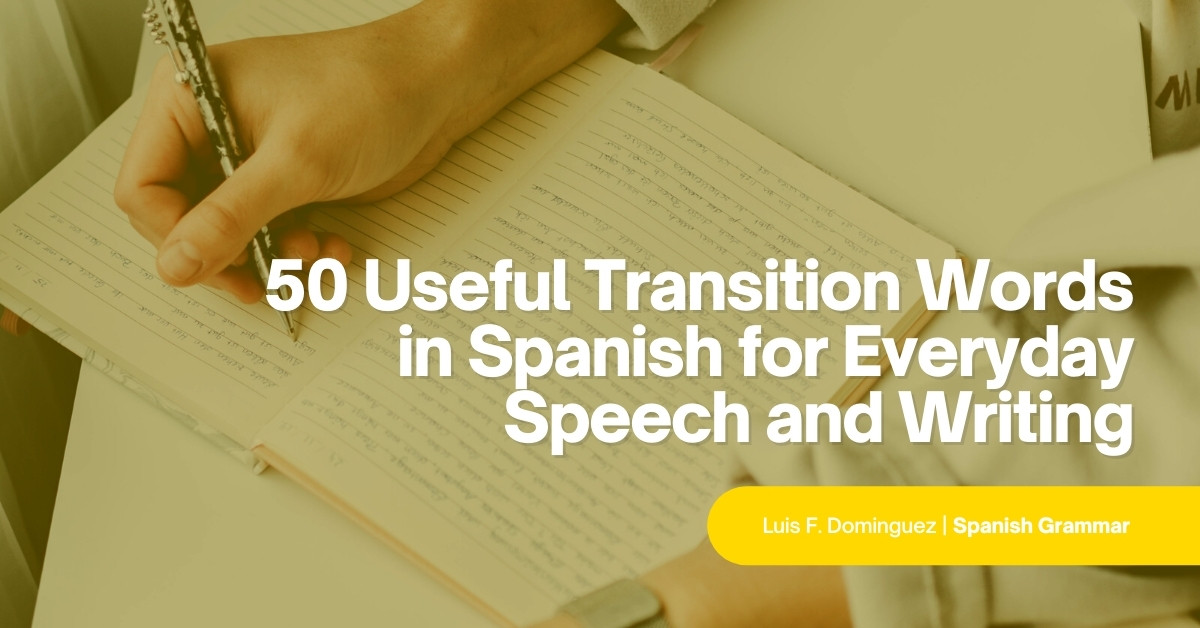
Credit: www.spanish.academy
Table of Contents
Why Are Speech Transitions Important In Public Speaking?
Speech transitions play a crucial role in public speaking by connecting ideas seamlessly. These words and phrases help maintain the flow of the speech and captivate the audience, ensuring a clear and coherent delivery.
Speech transitions play a significant role in public speaking. They serve as vital connectors that link together various ideas and concepts in a seamless manner. By using appropriate words and phrases to transition between different points, speakers can maintain the flow and coherence of their speech.
Here’s why speech transitions are important:
Benefits Of Using Speech Transitions:
- Enhance clarity: Transitions help speakers to clearly communicate their ideas and thoughts to the audience. By using transition words and phrases, they can guide the listeners through the different sections of their speech, making it easier to follow.
- Improve understanding: Effective transitions ensure that the audience can easily grasp the connections between ideas and concepts. This helps to prevent any confusion or misinterpretation of the speaker’s message.
- Increase engagement: Speech transitions prevent a monotonous or disjointed delivery, making the speech more engaging for the audience. By smoothly moving from one idea to another, the speaker captures the listeners’ attention and keeps them actively involved throughout the presentation.
- Highlight key points: Transitions can be used strategically to emphasize important information or key points. By signaling the significance of certain ideas, speakers can ensure that these points are understood and remembered by the audience.
Impact On Audience Engagement:
- Retention of information: With the help of effective speech transitions, speakers can enhance the audience’s ability to retain and recall the information presented. Logical connections created through transitions make it easier for listeners to process and remember the content.
- Focused attention: Well-placed transitions help to maintain the audience’s focus and prevent their minds from wandering. By smoothly transitioning between ideas, speakers keep the listeners engaged and attentive.
- Active participation: Speech transitions encourage the audience to actively participate in the speech. Clear connections between ideas enable listeners to anticipate the direction of the speech, allowing them to make connections and draw conclusions alongside the speaker.
- Emotionally connect: Transitions can also have an emotional impact on the audience. By using appropriate words and phrases, speakers can evoke specific feelings, making the speech more memorable and impactful.
Creating a smooth and coherent flow:
- Logical progression: Transitions facilitate a logical progression of ideas, enabling the speaker to present their thoughts in a structured manner. This ensures that the audience can easily follow the speaker’s intended flow of information.
- Seamless connection: Speech transitions act as bridges between different ideas or sections, creating a seamless connection between them. This helps to establish a sense of continuity in the speech, preventing any abrupt shifts in topic or subject matter.
- Professional delivery: The use of speech transitions demonstrates a speaker’s professionalism and command over their subject. It showcases their ability to present complex ideas in a clear and organized manner.
By recognizing the importance of speech transitions and incorporating them into public speaking, speakers can enhance the effectiveness of their presentations, captivate their audience, and ensure that their message is delivered with impact.
Types Of Speech Transitions
Discover various types of speech transitions that effectively connect ideas and thoughts in your speech. These words and phrases seamlessly guide the flow of your presentation, keeping your audience engaged and interested. Improve your public speaking skills with these powerful speech transition techniques.
Transition words and phrases play a crucial role in connecting your ideas and making your speech or presentation flow smoothly. By using these linguistic tools, you can create a cohesive and engaging narrative that keeps your listeners hooked. In this section, we will explore the different types of speech transitions, including transition words and phrases, verbal transitions, and nonverbal transitions.
Transition Words And Phrases:
- First and foremost, transition words and phrases serve as the glue that holds your speech together. They facilitate the logical progression of your ideas and help your audience follow along effortlessly.
- Additionally, transition words and phrases add clarity and coherence to your speech, ensuring that your message is easily understood.
- Moreover, they signal shifts in topic, introduce examples, emphasize crucial points, and establish cause-and-effect relationships.
- Furthermore, transition words and phrases enable you to create smooth transitions between different sections of your speech, which is essential for maintaining audience engagement.
Verbal Transitions:
- Verbal transitions involve the use of spoken words or phrases to guide your audience from one idea to another seamlessly.
- For instance, you can use phrases like “now, let’s move on to…”, “in relation to…”, or “on the other hand…” to smoothly transition between topics.
- Likewise, starting a sentence with phrases such as “in the same vein…”, “to illustrate my point…”, or “another key aspect is…” can effectively connect your ideas and make your speech more coherent.
- Furthermore, verbally signaling your intention to transition, using phrases like “now, let’s shift gears and discuss…”, “next up, we’ll explore…”, or “in light of this information…” can help your audience anticipate and comprehend your transitions better.
Nonverbal Transitions:
- Nonverbal transitions involve actions, gestures, or visuals that complement your verbal transitions, reinforcing the connections between your ideas.
- Use physical cues, such as changing your stance, moving to a different part of the stage, or making eye contact with a specific audience member, to signify a transition.
- Similarly, employing visual aids like slides, charts, or props can also assist in smoothly guiding your audience from one idea to the next.
- Additionally, adjusting your tone of voice, pausing strategically, or utilizing facial expressions can effectively emphasize the shift in ideas and engage your listeners.
Incorporating a variety of transition words and phrases, implementing verbal transitions, and utilizing nonverbal cues can greatly enhance the flow and impact of your speech. Integrating these techniques will help you maintain your audience’s attention and ensure that your ideas are communicated effectively.
So, let’s dive in and explore the world of speech transitions further!
Using Transition Words And Phrases
Discover the power of using speech transitions to seamlessly connect your ideas. By employing a variety of transition words and phrases, you can create a cohesive flow in your speech while keeping your audience engaged and interested. Swap repetitive terms for different expressions to ensure your content remains fresh and captivating.
Importance Of Strategic Placement:
- Transition words and phrases are essential in speech writing as they help to connect and smoothly organize ideas and thoughts.
- Strategic placement of transition words and phrases allows for a coherent flow of information, making it easier for the audience to follow the speaker’s train of thought.
- Proper use of transition words and phrases can enhance the overall impact of a speech by creating a logical progression of ideas and reinforcing key points.
- By strategically incorporating transition words and phrases, speakers can maintain the audience’s attention and prevent confusion or disengagement.
Commonly Used Transition Words:
- “furthermore”: Used to add another supporting point or to provide additional information.
- Example: Furthermore, research has shown that regular exercise improves overall mental health.
- “however”: Introduces a contrasting idea or viewpoint.
- Example: The study found that the new drug is effective; however, more research is needed to determine long-term effects.
- “meanwhile”: Shows a simultaneous action or event occurring.
- Example: The company was experiencing financial difficulties; meanwhile, their competitors were thriving.
- “moreover”: Indicates the addition of more information or evidence.
- Example: The data collected from the survey revealed alarming statistics; moreover, it highlighted the need for immediate action.
Connecting Ideas Within A Sentence:
- “similarly”: Demonstrates a likeness or similarity between two ideas.
- Example: The baby elephant walked with a wobble, similarly to a toddler taking their first steps.
- “in addition”: Introduces an additional piece of information or evidence.
- Example: The market research indicated a growing demand for organic products; in addition, consumer preferences were shifting towards sustainable packaging.
- “likewise”: Expresses similarity or agreement with a previous statement.
- Example: The new policy aims to increase employee satisfaction; likewise, it strives to improve overall productivity.
- “on the other hand”: Indicates a contrasting viewpoint or perspective.
- Example: The group was divided on the issue; on the other hand, some argued for immediate action while others preferred a more cautious approach.
Transition Phrases For Introducing New Points:
- “first and foremost”: Emphasizes the primary or most important point to be made.
- Example: First and foremost, it is crucial for individuals to prioritize their mental health.
- “another key point”: Introduces an additional significant idea or argument.
- Example: Another key point to consider is the impact of social media on mental well-being.
- “lastly”: Signals the final point or argument in a series or sequence.
- Example: Lastly, it is essential to provide accessible and affordable mental health services for all individuals.
Transition Words For Emphasizing Or Contrasting Ideas:
- “indeed”: Emphasizes and reinforces a previous point or statement.
- Example: The results of the study indeed highlight the need for further investigation.
- “contrarily”: Shows a contrasting or opposite perspective.
- Example: While some argue for stricter regulations, contrarily, others believe in the importance of personal freedoms.
- “in summary”: Provides a concise overview or recap of the main points discussed.
- Example: The research demonstrates the significant impact of early childhood education on future academic success.
Remember, incorporating these transition words and phrases into your speech can greatly enhance its overall effectiveness, making it more engaging and easy to follow. Use them strategically to guide your listeners through your ideas and ensure they stay connected and engaged with your message.
Incorporating Verbal Transitions
Discover the power of incorporating verbal transitions in your speech to effortlessly connect your ideas. Enhance your communication skills with carefully chosen phrases and words that keep your audience engaged and interested. Unlock the potential of seamless transitions for impactful speeches.
Establishing A Connection Between Ideas
- Incorporating verbal transitions is essential in speech delivery as it helps maintain a smooth flow of ideas. These transitions act as bridges between different thoughts, guiding the audience through your speech. By using the right words and phrases, you can establish clear connections between ideas, leaving a lasting impact on your listeners. Let’s explore some effective techniques for incorporating verbal transitions.
Using Clear Language And Cues
- Clear language and cues allow your audience to follow along effortlessly, ensuring that your ideas are effectively communicated. Consider the following strategies to enhance clarity in your speech:
- Signposting: The use of signposting phrases, such as “firstly,” “next,” or “” helps guide your audience through the structure of your speech, making it easier for them to follow your thought process.
- Repetition: Repeating key phrases or concepts throughout your speech can reinforce your ideas, making them more memorable for your audience.
- Pronouns: Utilize pronouns like “they,” “we,” or “you” to create a sense of inclusivity and engagement. This fosters a connection between you and your audience, encouraging active participation.
Examples Of Verbal Transition Techniques
- Here are some effective examples of verbal transition techniques to incorporate in your speech:
- Cause and effect: Use phrases like “as a result,” “consequently,” or “therefore” to highlight the cause and effect relationship between different ideas.
- Comparison and contrast: Employ phrases such as “similarly,” “on the other hand,” or “in contrast” to draw comparisons or highlight differences between ideas, helping your audience understand distinct concepts better.
- Time sequence: Signal the passage of time or progression of ideas with phrases like “before,” “afterward,” or “meanwhile.” This helps your audience follow the chronological order of events or thoughts.
Practice And Delivery Tips
- To improve your use of verbal transitions, consider these practice and delivery tips:
- Rehearse your speech: Practice delivering your speech multiple times, focusing on incorporating verbal transitions smoothly. This will help you become more comfortable and confident in your delivery.
- Record and review: Record yourself delivering the speech and take note of areas where verbal transitions can be improved. Analyzing your performance will enable you to refine your delivery and strengthen your speech.
- Seek feedback: Request constructive feedback or have a trusted person observe your speech. They can provide valuable insights on how to enhance your verbal transitions and overall impact.
Remember, incorporating verbal transitions in your speech not only enhances its coherence but also ensures that your ideas are effectively communicated and understood by your audience. By practicing and mastering these techniques, you’ll become a more engaging and persuasive speaker.
Keep honing your skills, and watch your speech captivate and inspire your listeners.
Leveraging Nonverbal Transitions
Discover the power of nonverbal transitions in connecting your ideas during speeches. Utilize effective words and phrases that enhance the flow of your presentation and engage your audience. Say goodbye to common speech transition pitfalls and captivate your listeners with seamless transitions.
In the realm of public speaking, effective speech transitions are crucial for connecting ideas and maintaining the attention of your audience. While verbal transitions are commonly employed, nonverbal cues can be just as powerful in conveying a seamless flow of thoughts.
This section will explore the various ways to leverage nonverbal transitions, including visual cues, body language, gestures and facial expressions, the importance of eye contact, and how to convey confidence and professionalism.
Visual Cues And Body Language:
- Visual cues play a vital role in indicating transitions and maintaining engagement during a speech.
- Use confident and purposeful body language to signify a change in topic or shift in ideas.
- Positioning yourself differently on stage or adjusting your stance can visually communicate a transition to your audience.
- Maintain an open and relaxed posture, which indicates a welcoming and inclusive environment.
Gestures And Facial Expressions:
- Utilize gestures and facial expressions to enhance the impact of your nonverbal transitions.
- Gesture with your hands to emphasize key points or signal a transition to a new idea.
- Employ facial expressions to convey enthusiasm, surprise, or seriousness, making your transitions more engaging and memorable.
Importance Of Eye Contact:
- Eye contact is a powerful nonverbal tool that establishes a connection with your audience and aids in smooth transitions.
- Engage with individuals in different parts of the room, ensuring that your eye contact is inclusive and not only focused on a single person or section.
- During transitions, maintain eye contact to signal that you are moving on to a new topic or idea.
- The use of eye contact can also help you gauge the audience’s reaction and adjust your delivery accordingly.
Conveying Confidence And Professionalism:
- Nonverbal transitions are instrumental in conveying confidence and professionalism throughout your speech.
- Maintain a calm and composed demeanor, which instills confidence in your audience.
- Avoid fidgeting or excessive movements that may distract from your message.
- By utilizing nonverbal cues effectively, you can create a sense of professionalism and competence, enhancing your overall speaker presence.
Incorporating nonverbal transitions into your speech can significantly improve its flow, captivate your audience, and reinforce your message. Visual cues, body language, gestures, facial expressions, eye contact, and conveying confidence and professionalism are all essential elements in creating a seamless and engaging speaking experience.
Practice and master these nonverbal techniques to elevate your speech to new heights.
Transitioning Between Different Sections Of A Speech
Transitioning between different sections of a speech is crucial for maintaining a coherent flow and engaging the audience. By utilizing effective speech transitions, you can seamlessly connect your ideas, avoiding clichés and repetitive terms, to ensure a captivating and impactful delivery.
Transitioning between different sections of a speech is crucial to maintain the flow and coherence of your ideas. To ensure a smooth transition, consider using the following techniques:
Introducing A New Topic Or Main Idea
- Pose a question: Start a new section by asking a thought-provoking question that introduces your audience to the upcoming topic. For example, “have you ever wondered how technology has revolutionized the way we communicate?”
- Provide a brief anecdote or story: Capture your audience’s attention by sharing a relevant story or anecdote that sets the stage for the new topic. This personal touch will engage your listeners from the start.
- Use a powerful quote: Begin your section with an impactful quote that relates to the subject matter. This will immediately draw your audience’s attention and create curiosity about the upcoming discussion.
Summarizing Key Points
- Highlight the main ideas: Summarize the key points you have discussed so far in a concise and clear manner. This allows your audience to understand the progress of your speech and reinforces the central ideas you want them to remember.
- Use transition words: Employ transition words and phrases such as “” “to summarize,” or “in conclusion” to signal that you are summarizing the main points. This helps the audience mentally prepare for the upcoming summary.
Shifting Focus Or Transitioning To A Conclusion
- Preview the provide a glimpse of what your conclusion will entail without delving into the details. This primes your audience for the upcoming ending, creating anticipation and signaling the shift in focus.
- Ask for the audience’s attention: Use phrases like “now, let’s turn to the final part of our discussion” to redirect the attention back to the conclusion. This helps maintain engagement and refocuses the audience’s thoughts on the closing remarks.
- Reinforce the central theme: Remind your listeners of the central theme or main message of your speech. This will ensure that the concluding remarks connect back to the core ideas you have been discussing.
Remember, effective transitions are like signposts that guide your audience through your speech. By utilizing these techniques, you can navigate between different sections smoothly and keep your audience fully engaged.
Tips For Effective Transitioning
Discover practical tips for effective transitioning in your speech through the use of appropriate words and phrases. Enhance the flow of your ideas by avoiding overused terms and incorporating a variety of expressions at the beginning of paragraphs. Keep your sentences concise and engaging to maintain the reader’s interest.
Preparing And Rehearsing Transitions:
- Craft a list of transitional words and phrases: To ensure smooth and seamless transitions between your ideas, compile a list of words and phrases that can serve as connectors. Examples include “however,” “in addition,” and “on the other hand.”
- Identify logical connections: Assess the flow of your speech and identify the logical connections between each point. This will help you determine the appropriate transitional words or phrases to use.
- Practice aloud: Once you have selected your transition words and phrases, practice incorporating them into your speech. Rehearse it several times to ensure that the transitions feel natural and help maintain the overall coherence of your ideas.
Using A Variety Of Transition Methods:
- Implement signposts: Signposts are words or phrases that indicate where you are in your speech and where you are going next. Examples include “firstly,” “next,” and “finally.” By using these signposts, you guide your audience through your speech, making it easier for them to follow along.
- Utilize parallel structure: Parallel structure involves using the same grammatical structure for each point in your speech. This creates a rhythm and consistency that facilitates smooth transitions. For example, instead of saying “i like hiking and to swim,” you would say “i like hiking and swimming.”
- Incorporate rhetorical questions: Asking a rhetorical question can help transition from one idea to the next seamlessly. It engages your audience and prompts them to reflect on the previous point before moving on to the next one.
- Use visual aids: Visual aids such as slides or props can serve as effective transition tools. By visually emphasizing the connection between ideas, you can make the transition more apparent to your audience.
- Provide summaries: Summarizing the main points of each section can be a powerful transition technique. It allows you to recap what has been discussed and prepare your audience for the upcoming topic.
Maintaining A Natural And Conversational Tone:
- Avoid using jargon: To keep your speech accessible and engaging, avoid using technical jargon or overly complicated language. Opt for words and phrases that your audience can easily understand.
- Vary sentence lengths: Using a mix of short and long sentences adds rhythm and variety to your speech. This prevents monotony and keeps your audience engaged.
- Practice active voice: Choosing active voice sentences instead of passive voice helps maintain a conversational tone. Active voice is more direct and engaging, making it easier for your audience to follow along.
- Engage with the audience: Encourage audience participation throughout your speech by asking for their thoughts or experiences related to your topic. This creates a more conversational and interactive atmosphere.
- Adjust your pace: Pay attention to your speaking pace and adjust it accordingly. Speaking too fast can make it difficult for your audience to process the information, while speaking too slowly can lead to disengagement. Aim for a rhythmic and natural pace.
Remember, effective transitioning is crucial for the cohesiveness and clarity of your speech. By preparing and rehearsing your transitions, utilizing a variety of transition methods, and maintaining a natural and conversational tone, you can ensure that your ideas flow smoothly and leave a lasting impact on your audience.
Frequently Asked Questions
What are speech transitions.
Speech transitions are words and phrases used to connect ideas and help the audience follow your presentation more smoothly. They create a logical flow and make it easier for listeners to understand and remember your key points.
Why Are Speech Transitions Important?
Speech transitions are important because they enhance the coherence and clarity of your speech. They help your audience navigate through your ideas and maintain their attention. Transitions also make your speech more engaging and polished, leaving a lasting impact on your listeners.
What Are Some Common Speech Transition Words And Phrases?
There are various speech transition words and phrases you can use, such as “in addition,” “however,” “on the other hand,” “moreover,” “as a result,” “to summarize,” and “finally. ” These transition words and phrases can help you transition between different ideas, compare and contrast points, and summarize information.
How Can Speech Transitions Improve My Public Speaking Skills?
Using speech transitions in your presentations enhances your public speaking skills by making your speech more organized, coherent, and impactful. With effective transitions, you can smoothly guide your audience through your ideas, keeping them engaged and helping them understand and remember your message.
To sum up, utilizing effective speech transitions is essential for seamless and coherent delivery. By incorporating appropriate words and phrases, you can effectively connect your ideas and guide your audience through your speech. Whether you are emphasizing a point, introducing a new topic, or providing examples, utilizing transitional words and phrases enhances the overall flow of your speech.
Moreover, these transitions help to maintain your audience’s engagement and comprehension. From using simple transitional words like “firstly” and “next,” to employing complex connectors such as “in contrast” and “similarly,” the right speech transitions can transform your speaking style. By following these guidelines and practicing your delivery, you can become a confident and compelling speaker.
Remember, speech transitions are powerful tools that can transform your speech from disjointed to cohesive, ensuring that your ideas are conveyed clearly and effectively. So, the next time you give a speech, make sure to incorporate these essential speech transitions and watch your message resonate with your audience.
Similar Posts
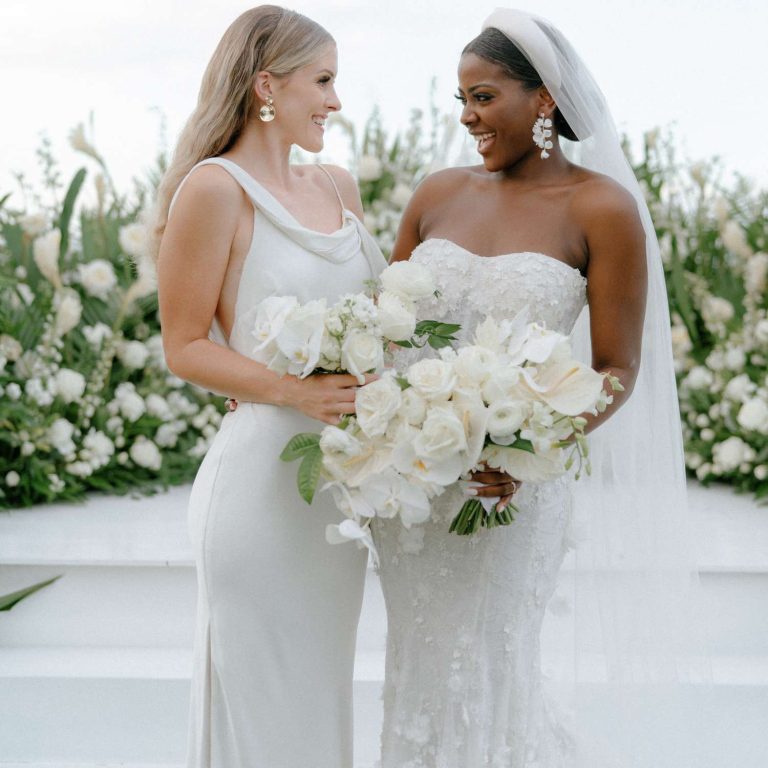
Who is the Maid of Honor to the Bride?
The Maid of Honor to the Bride is a close friend or relative who assists the bride throughout the wedding preparations and the ceremony. From helping with the wedding planning to standing by the bride’s side on the big day, the Maid of Honor plays a significant role in ensuring a smooth and memorable wedding…
Best Public Speaking Exercises
Public speaking exercises are a great way to improve your communication skills and boost your confidence in front of an audience. We will explore some of the best exercises that can help you become a more effective public speaker. Whether you are a novice or an experienced speaker, these exercises will provide you with valuable…
How to Become An Agile Lead?
So you’re interested in becoming an agile lead? That’s awesome! Being an agile lead means being able to guide a team to success in a fast-paced, ever-changing environment. It’s like being the captain of a sports team, making sure everyone is aligned and working together toward a common goal. But how do you become an…
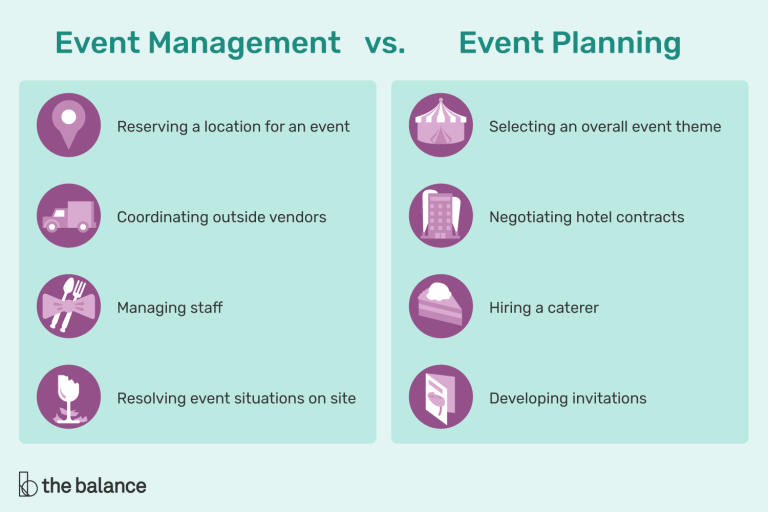
What Is Event Management?
Event Management is the process of planning and coordinating various activities to ensure the successful execution of an event. It involves organizing everything from venue selection and vendor management to logistics and on-site coordination. Event professionals oversee all aspects of an event to create a memorable experience for attendees. With meticulous attention to detail, event…
Crippling Anxiety Public Speaking
Imagine standing in front of a crowd, your heart pounding, your palms sweating. Crippling anxiety takes over as you’re about to deliver a speech or presentation. But hey, don’t worry, you’re not alone! Public speaking can be intimidating for many of us, especially when anxiety kicks in. Public speaking anxiety, also known as glossophobia, is…
The Best Public Speaking Books
The best public speaking books are a valuable resource for improving your communication skills. We will discuss some of the top books in this field that provide practical tips, techniques, and advice for becoming a better public speaker. Whether you are a beginner or an experienced speaker looking to refine your skills, these books offer…

Want to create or adapt books like this? Learn more about how Pressbooks supports open publishing practices.
13 Transitions: Bridging Ideas for a Seamless Presentation

Good transitions can make a speech more important to the audience because they feel they are being taken to a positive conclusion without having to travel a bumpy road. – Joe Griffith
Transitions
The difference between a novice speaker and an advanced speaker is in how they bridge the gap between ideas. Learning to use transitions effectively will help take your speaking to the advanced level. Transitions can be one word, a phrase, or a full sentence.
The audience is dying to know the relationship between ideas. Their brains are hard-wired for that. It’s more important when you are speaking than when you are writing because the listeners can’t go back – they have to get it when it happens. If the brain is bored, or gets tired because it’s overwhelmed, or gets confused – it can’t stay in that place, so it daydreams, creating its own interest. Speech Coach Max Dixon, Westside Toastmasters.
So, let’s get started. I have included various transition types for you to consider. These do little good if you read them and do not use them. This list works best if you read it now and then revisit it every time you write a speech.
- Let’s begin with…
- First, I’d like to share with you…
- Now that you’re aware of the overview, let’s begin with…
- Our first stop is…
- I will first cover…
- My first point covers…
- To get started, let’s look at…
The Order of Things
- After that…
- Next…
- Second thing…
- Our next stop is…
- Let me tell you about your next step.
Steve Jobs Commencement to Stanford University
Steve Jobs clearly previews his main points, “Today I want to tell you three stories from my life. That’s it. No big deal. Just three stories.” He flows smoothly between points with clear transitions.
- “The first story is about connecting the dots.”
- “My second story is about love and loss.”
- “My third story is about death.”
Watch Steve Jobs Stanford Commencement Address
Between Similar Points
- In the same way…
- In addition…
- Likewise…
- Similarly…
Between Disagreeing Points
- Conversely…
- Despite this…
- The flip side of the issue…
- However…
- On the contrary…
- On the other hand…
- On the other side …
- Yet, we cannot ignore …
- The opposing argument …
- If we examine the opposite side, we see …
Introduce an example
- This is best illustrated by an example…
- For instance…
- Take the case of…
- For example…
- To understand this…
- Let me illustrate this by…
Introduce Research
- To make the point…
- As illustrated by…
- Case in point…
- To solidify this point…
- As researched by…
Cause and effect
- Therefore…
- Thus…
- Consequently…
- As a result…
- This is significant because…
- Hence…
- Resulting in…
- For that reason …
- The effect is…
Elaboration
- Also…
- Besides…
- What’s more…
- In addition/additionally…
- Moreover…
- Furthermore…
Transition to a Demonstration
- Let me show you how this works…
- Let me demonstrate this…
- Now that we’ve covered the theory, let’s see it in action …
- Next, I’d like to let you see this for yourselves…
Introducing Your Visual
- As you can see from this chart…
- I’d like you to notice that…
- The table indicates…
Questions as Transitions
- Now that you know the problem, what do you think will solve it?
- What do you think will solve this crisis?

Connective: A word or phrase that connects the ideas of a speech and indicates the relationship between them.
Transitions: A word or phrase that indicates when a speaker had finished one thought and it moving on to another.
Internal preview: A statement in the body of the speech that tells the audience what the speaker is going to discuss next.
Internal summary: A statement in the body of the speech that summarizes the speaker’s preceding point or points.
Signpost: A very brief statement that indicates where a speaker is in the speech or that focuses attention on key ideas.
From the Art of Public Speaking by Stephen Lucas
THOUGHTS FROM A FORMER STUDENT
One thing I learned in class that made me a better speechwriter was to pay attention to the transitions. In our outlines, there was space for our main points, but also our transitions between them. At the beginning of the semester, I thought this was a waste of time planning out my transition for a speech and that I would just wing it the day of, but I soon realized how important they were. Transitions are like the finishing touches that make everything fall together in a speech.
You may have some interesting points or facts to give to your audience, but without transitions, you have nothing to connect your points and create a narrative. An audience is much more interested in a talk if there is a continuing idea or theme, and transitions help create this. I found this out by watching the other students in my class as they learned to use transitions as well. I loved the speeches that were clearly organized and had a common idea with transitions.
Zoe Lawless, Honors Public Speaking, University of Arkansas

Movement as Transition
Many people don’t think about movement as a type of transition, but it can be a very powerful way to help your audience transition between ideas.
- Setting out a visual or putting it away signals a change in ideas.
- Some speakers will imagine a baseball diamond laid out on the floor and move to each base throughout the speech. Their opening comment is at home plate. Point one is delivered on first, point two on second, and point three on third. They stand back on their home plate to deliver the final closing statements.
- One speaker that I met said he always has a special place that is his big idea place. He may move around during his speech but when he wants the audience to know it is an important point, he stands in the big idea place.
Silence as a Transition
John Chappelear, speech consultant, suggests that the use of silence can be powerful. It is powerful, but it is not easy. Being able to stand silently in front of a large audience for 15-45 seconds requires practice. Sometimes you can use silence as a way to let the audience catch up and think deeply about what you just said.
Transitioning Between Slides
- As the next slide shows…
- As you can see…
- Next, I will show you…
Transitioning to Visuals
- I’d like to direct your attention to…
- This diagram compares…
- Now, I’d like to illustrate this with…
Signaling the End is Near
- In conclusion…
- To sum it up…
- Lastly…
- In a nutshell…
- To recap…
- I’d like to leave you with…
- Finally, I’d like to say…
- The takeaway from all of this is…
- To summarise…

Moving to the Next Speaker
- I told you about the most credible theories about climate change, now John will share with you some examples of what you can do.
- I’m going to turn it over to Malachi, who will take you through the next few points.
- Next, Angie will come up and talk about…
- To help us understand this topic better, we have Beatrice, who will talk us through…
- Look to the next speaker and motion towards them as they walk to the podium, Twila will tell you more…
Problems with Transitions
These are some of the most common problems with transitions:
- Not planning out transitions and just “winging it.”
- Using fancy phrases inconsistent with the rest of the speech.
- Saying, “I have five points” and then having only four or miscounting the points.
- Overusing the same transitional phrase.
- Long pauses before transitions as the speaker tries to figure out what to say next.
Tricks on Smoothly Presenting Transitions
Now you have a list of ideas to use when you write your next speech, let’s talk about how to use transitions effectively. Speakers typically struggle as they end one point and seek to move to the next idea. This usually happens because of poor planning, not enough practice, and poor note management. Let’s talk about these one at a time. First, poor planning happens because a speaker does not put enough time and effort into writing the speech. Second, not enough practice happened because even when a speech is practiced, it is practiced with regards to getting through the main points and not about moving smoothly between points. Finally, poor note management. Let me give you some tricks.
- Make your notes large-larger than you think you need.
- Give ample space between main ideas so you can look down and see the gap and know another point is coming.
- On your notecards, make each main idea a different color.
- I usually have a “T” in a circle to remind me that this is a transition statement.
- Practice your speech twice by just reading the transition statements and the next sentence.
- The night before your speech, visualize how you will manage the transitions.
Key Takeaways
Remember This!
- Using transitions will help your speech flow smoothly.
- Practice using your transitions.
- Plan transitions for impact.
Please share your feedback, suggestions, corrections, and ideas.
I want to hear from you.
Do you have an activity to include? Did you notice a typo that I should correct? Are you planning to use this as a resource and do you want me to know about it? Do you want to tell me something that really helped you?
Click here to share your feedback.
Allgood, E., & Ebersole, T. (Eds.). (2017). C OMM 2100 public speaking: A workbook for student success . Fountainhead Press.
Beqiri, G. (2018). Speech transitions: Words and phrases to connect your ideas. https://virtualspeech.com/blog/speech-transitions-words-phrases
Dugan, A. (2013, August 26). Speech transitions: Magical words and phrases. http://sixminutes.dlugan.com/speech-transitions/
Effective speech transitions, how to make your speech flow. https://franticallyspeaking.com/effective-speech-transitions-how-to-make-your-speech-flow/
Jobs, S. (2005). Steve Jobs commencement address to Stanford University. [Video]. YouTube. https://news.stanford.edu/2005/06/14/jobs-061505/ Standard YouTube License.
Lawless, Z. (2020). Honors Public Speaking, University of Arkansas, Fayetteville. Used with permission.
Lucas, S.E. (2009). The art of public speaking. McGraw Hill.
Pace, P. (n.d). Bridge the gap–Speech transitions. https://westsidetoastmasters.com/article_reference/bridge_the_gap-speech_transitions.html#:~:text=%22I%20think%20body%20movement%20is,carries%20the%20audience%20with%20him.
Media Attributions
- Sitting on bridge © Alex Azabache is licensed under a CC BY (Attribution) license
- karine-avetisyan-ipuiM-36tAg-unsplash © Karine Avetisyan is licensed under a CC BY (Attribution) license
- haniel-espinal-Oy9KX9NsDeU-unsplash © Haniel Espinal is licensed under a CC BY (Attribution) license
- Panel_discussion_at_Wikipedia_Day_2019 © Eric Luth is licensed under a CC BY-SA (Attribution ShareAlike) license
Advanced Public Speaking Copyright © 2021 by Lynn Meade is licensed under a Creative Commons Attribution-NonCommercial 4.0 International License , except where otherwise noted.
Share This Book

The Power of Transitions and Closings in Presentations
Suppose you want to make a lasting impression on your audience during a presentation. In that case, mastering transitional phrases and strong conclusions is essential. Not only do they keep your audience engaged, but they also help you get your message across effectively.
In this post, we’ll explore the art of using transitional phrases and strong conclusions to succeed at giving presentations. Whether you’re a seasoned public speaker or just starting out, this post will provide you with tips and tricks to keep your audience’s attention throughout your presentation.
Introduction
Have you ever sat through a presentation that left you feeling bored or disinterested? Or have you ever given a presentation that failed to get your message across effectively? If so, you’re not alone. Many people struggle with public speaking, and it’s easy to see why. It’s not just about what you say but how you say it.
One of the most important aspects of a successful presentation is using transitional phrases and strong conclusions. These two elements can make or break your presentation, so it’s crucial to master them.
Explanation of Transitional Phrases
Transitional phrases are words or phrases that connect one idea to the next. They help to create a smooth flow between different parts of your presentation, making it easier for your audience to follow along.
Transitional phrases can be used in many different ways, depending on the type of presentation you’re giving. For example, use them to introduce a new topic, summarize a point you just made, or transition to the next section of your presentation.
Transitional phrases for your presentations
As an experienced presenter, there are a variety of transitional phrases that you can use to keep your audience engaged and focused on your message. Some examples include:
- “Moving on to the next point,…”
- “Building on that idea,…”
- “Perhaps most importantly, let me add this…”
- “If there is one thing to learn, remember this…”
- “This is why it’s important to…”
These phrases are not only effective in guiding your audience through your presentation but also help to keep your audience focused. Not only that, they help to create a natural flow between ideas.
Ultimately, the best transitional phrases will depend on the specific content and structure of your presentation, but incorporating a variety of these phrases can help to elevate your presentation and make it more memorable for your audience.
More Examples of Transitional Phrases
Here are some examples of transitional phrases you can use in your presentations:
- “ Moving on to our next topic…”
- “ Now, let’s take a look at …”
- “ Next up …”
- “ Let’s switch gears and talk about…”
- “ In addition to reducing your risk of chronic diseases, a healthy diet can also improve your mood and energy levels.”
- “ Moreover , studies have shown that people who eat a balanced diet are more productive and have better cognitive function.”
- “ On the other hand , a diet high in processed foods and sugar can increase your risk of obesity, heart disease, and other health problems.”
Remember Why It Is Important
Using transitional phrases is essential because they keep your audience engaged and help them understand the structure of your presentation. Without them, your presentation can feel disjointed and hard to follow.
In addition, using transitional phrases shows you’re well-prepared and confident in your presentation. It helps to establish credibility and can make you appear more professional.
Tips and Tricks
To use transitional phrases effectively, it’s crucial to practice and become comfortable with them. Here are some tips to help you master the art of transitional phrases:
- Keep it simple . Use short and clear phrases that are easy to understand.
- Practice your transitions . Make sure you know exactly when and how to use your transitional phrases.
- Use them consistently . Don’t use transitional phrases in some parts of your presentation and then neglect them in others.
- Use them sparingly. Use transitional phrases sparingly, or they can become distracting and take away from your message.
- Plan ahead : Before you start your presentation, make sure you have a clear outline of the main points you want to cover. This will help you choose the right transitional phrases to connect your ideas.
- Use signposts : Signposts are words or phrases that signal to your audience that you are moving on to a new point. Some examples of signposts include “firstly,” “secondly,” “in summary,” and “finally.”
- Vary your phrases : Using the same transitional phrases repeatedly can become monotonous. Try to mix up your phrases to keep your audience engaged.
- Practice, practice, practice : The more you practice using transitional phrases, the more natural and effortless they will become.

Project Manager: Risk Management in Project Planning

Cultural Connections Through Ordering Fast Food

Tips To Help You Keep Your Job In Tough Times

Essential Business Concepts

Factors for Success in Corporate America

Phrases for Delivering Presentations

Resume Words Part 2

Resume Actions Words

Essential Business English Words

- English Level
- Speaking Quiz
- Listening Practice
Quick Links
- How It Works
- Private Lessons
get in touch
- Ask Us Anything
- 2023 © Copyright New York English
- Speech Crafting →
Speech Transitions: How to Word Them Effectively (17 Examples)
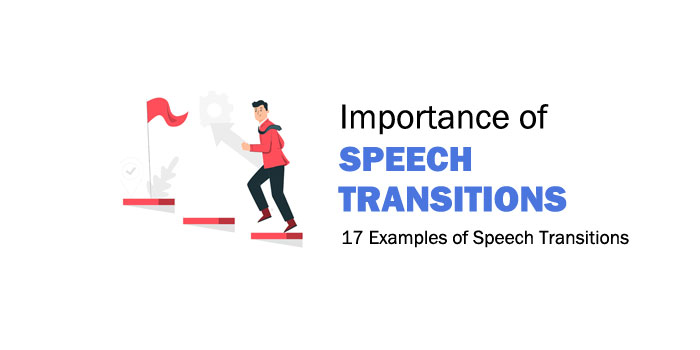
Do you think your audience notices the transition words you use during the speech? Probably not.
However, when presenting to an audience, you need your words and ideas to flow smoothly to ensure successful delivery. This retains the central idea and helps you hold the audience's attention.
Transition words enable such flow, allowing you to move effortlessly from one idea to the next.
Therefore, it is essential to learn various transition words for speeches and the right way to use them.
You must also understand the connection between body language and speech transitions and what pitfalls to avoid when making a presentation.
What Are Speech Transitions?
Speech transitions are tools to move from one part of a speech to the next. These words, phrases, or complete sentences help a presenter connect different ideas to make the speech coherent and exciting.
Instead of listing those ideas, a presentation needs to flow.
Introducing the next concept and showing that connection helps to deliver your message effectively. The alternative would be to send your audience a list of your ideas and save them a dull and incoherent speech.
Forming connections in a speech is essential since you need your words to link your ideas to form a message.
Therefore, you must show consequences, comparisons, examples, sequences, and conclusions. They allow you to guide the audience to see your argument by making your speech smooth and your expressions clear.

Think of speech transitions as the arrows on signposts , showing hikers which directions to follow to arrive at a predetermined destination.
With these arrows showing the way, your audience can arrive at your speech's core and main message.
What Are the Types of Transitions in Speeches?
Let us look at different types of speech transition words and phrases:
1. Transition Between Similar Ideas
As the name suggests, this transition connects two similar ideas by showing where one ends and the next begins.
This type of speech transition examples includes: likewise, similarly, in a similar way , etc.
2. Transition to Elaborate Upon an Idea
These help you emphasize an idea by providing more information about it. Examples include: in addition, furthermore, moreover, also, in other words , etc.
3. Transition Between Contrasting Ideas
This shows where one idea ends, and an opposing one begins.
Contrasting transition words and phrases set up the next point to support the final idea by showing consequence or urgency.
Examples include: however, on the other hand, conversely, on the contrary, on the other side, in contrast , etc.
4. Transition to a List or Numbered Points
These speech transitions help you deliver a list of items that would otherwise be numbered on paper. A typical example is numbering each point as you go down the list.
For example: first, second, third, firstly, secondly, thirdly , etc.
5. Transition to Emphasize a Cause-Effect Relationship
This transition shows how one idea depends on the next or how its existence determines the fate of the next.
Examples include: therefore, consequently, as a result, for that reason , etc.
6. Transition to Show a Supporting Example
This simple transition is powerful as it introduces an example to support and emphasize a point.
Examples include: for example, for instance, to illustrate this, as an example , etc.
7. Transition to a Supporting Demonstration
Your presentation may include a demonstration to highlight your points further. Therefore, you need to help the audience smoothly transition from listening to you to paying attention to the demonstration.
You could tell the audience, " Now that we've discussed the theory, let's see it in action. "
8. Transition Between the Main Speech Parts
You need to transition from the introduction to the main body to the conclusion . Typically, the introduction includes a brief breakdown of what your speech entails. That is, you'll let the audience know what to expect.
As you move to the main body, you can use speech transitions such as, " Let's begin, " " Let's get started, " etc.
When you reach your conclusion, you can wind down with " In summary, " " In conclusion ," "t o round off, " etc.
9. Transition to Raise an Earlier Point
Your speech may not flow from the beginning to the end in one straight line, and sometimes you may need to recap an earlier point for your address to resume its smooth flow or just to re-emphasize a point you need for your next part.
Examples include " let's return ," " let's revisit, " and " go back to …, etc.
Advanced Speech Transitions
The previous section covered most speech transitions. This section will focus on speech transition examples that apply when standing before an audience.
While you'll need the transitions mentioned above, how you execute them before an audience determines how engaging your speech will be.
Note that giving a speech allows you to elaborate more on transition words and phrases, unlike written communication.
Therefore, you're free to use phrases like " as an example, " " let us look at several examples, " etc.
In written communication, you need to use as few words as possible, such as " for example, " "f or instance, " etc.
Moreover, the use of longer transitions might smoothen your speech. Therefore, use longer phrase examples in your speech, but avoid going overboard with the word count.
1. Transition to Another Speaker
In a group presentation, preparing the audience for a speaker change is vital. Your flow will likely differ, so you need to allow the audience to switch gears.
Examples include, " my colleague will talk about our next topic, " " I now hand over the microphone to… ", etc.
2. Commanding Speech Transitions
Asking your audience to do something specific is powerful and helps you guide their information processing.
Examples include, " Listen to this, " " Guess what? ", " Pay attention to this, " etc. These initially seem subtle and are agreeable, making them practical guiding tools.
3. Empathy Speech Transitions
These appear to give the audience's perspective on your speech while subtly guiding their thought process where you wish.
Examples include, " Now, I know what you're thinking, " " You're probably asking yourself… ", etc.
While you don't necessarily know what the audience thinks, you can read their reaction to your point. It shows you're connected to them, and they, in turn, will feel the same way.
You can rely on logic and intuition to correctly guess what they are thinking based on your speech up to that point. If done correctly, this will further pique their interest and increase their attention.
4. Reveal a Significant Discovery
This speech transition works best when you want to state a significant point in the speech. It embodies the spirit of narration, where you want to reveal the big secret.
Examples include, " The results from the experiment were staggering, " " One witness shared the most chilling detail, " etc.
5. Highlight A Catch
This speech transition is similar to "However" in written communication.
Examples include, " But, there's a catch, " " That would have been a perfect conclusion, except… ", " Unfortunately, the prototype has one glaring flaw, " etc.
This transition jolts the audience's attention and sets them up for the next part.
6. How-To Speech Transition
This works best when you're ready to offer solutions in your presentation. The transition primes your audience to receive the solutions; you may even see some taking notes.
You could tell them, " Let me now teach you how to… ", " Here is how you too can attain similar success, " etc.
7. Curiosity-Inducing Speech Transitions
Sprinkling curiosity-inducing questions at intervals in your speech sustain the audience's attention. It also refocuses them on your main points and subtly reviews previous ones.
For example, you could ask them, " What's really going on here? ", " What's the aggressor's main motivation?" etc.
8. Stay With Me
When you get to complex sections of a technical presentation, you need to ensure your audience understands.
You can simplify the concepts as much as possible, but sometimes you must check in with them and encourage them. This speech transition reassures audience members and highlights where they need to pay the most attention.
Examples include " Stay with me, " " Stick with me, " etc.
You could also point to a presentation slide, use bold text for specific parts of the displayed text, etc.
Speech Transitions and Body Language
Your audience will shift attention between your presentation aids and your body. Presentation aids add to the quality of your speech, but your body language is more significant.
Therefore, you can capitalize on that attention through gestures to emphasize your points. For example, a finger wag could underline a critical issue.
Additionally, pointing to a specific figure on a presentation slide could focus attention and drive your point home.
Body language is powerful, and this stresses the need to prepare well for your speech , noting all crucial turns. At the very least, avoid standing still while talking on stage.
Hand and Arm Movements
Speech transitions pair well with hand and arm movements for emphasis. However, you need to avoid making it seem confrontational.
For example, too much finger wagging may seem like you're pointing at someone in the audience. It also seems aggressive. Instead, use open palms as this is more inviting and approachable.
In addition, use hand and arm movements sparingly, or reserve them for the main points.
You could even count your fingers when listing the main points in your summary to draw the audience's eyes to yourself and allow them to focus better on your points.
Walking on Stage
All Apple Event presentations, whether in person or streamed, are perfect examples of the power of walking on stage.
Every presenter ensures they move about on stage, further emphasizing their point. They sustain the audience's attention and combine hand gestures when making the main points.

These presenters learned from the best; Apple's founding father, Steve Jobs . While his technology continues to dominate today, his speeches contributed significantly to those devices' acceptance and profits.
He would walk forward when making a positive remark and backward when stating a contradictory argument. He would walk left or right when explaining how something about the device works.
The movements were well timed , ending near his presentation slide when he needed to refer to something on the screen.
While seemingly random at first, your subconscious would pick the rhythm of his movements. You were soon engrossed in the speech, grasping every detail he intended.
Suddenly stopping in the middle of the stage and saying, " Pay attention to this, " " Guess what the research revealed, " " What we saw was shocking, " etc., was a powerful way he used to highlight your next point.
Other Body Language Factors
Other body language tools, such as facial expressions or mood changes, are equally powerful alongside speech transitions.
For example, you can smile before sharing some good news or appear serious when sharing some grave news.
You could even do something unexpected, like removing your reading glasses and saying, "Let me be frank with you guys."
Vary your tone as the speech unfolds to capture and guide your audience's attention. If done right, you could even affect their emotions and emotional reactions to your main points.

Transition Pitfalls You Need to Avoid
Poorly executed speech transitions will alter the meaning of your message and put off your audience. Here are the main ones:
Miscount Transition: This entails counting your main points but failing to follow a specific order and style.
For example, first, second, third, four, five, next, etc. Reserve counting for the summary section, where you can line up the points nicely. Additionally, avoid counting when there are subsections to your main points.
Incompatible Transition: An example is when you wish to contradict the previous point but end up stating some examples. The relationship between the first part of your sentence and the rest of it will make no sense to your audience.
Missing Transition: A poor and common way to fail at using transitions is not to use them. Switching from one point to the next with nothing to connect them only frustrates your audience.
Tangential Transition: These transitions excite the audience or help you fit in an incidental yet essential point.
However, they break from your flow and introduce new information while you're still transmitting the last part.
Reserve those for informal gatherings among friends where the more tangents your speech takes, the more interesting it is.
Speech transitions are vital components of any public speaking endeavor. They bring flow and logic to your speech and guide the audience's attention.
When used well, you'll make the audience arrive at specific conclusions and take particular actions afterward.
This article shares some of the best speech transitions to make your speeches memorable and meaningful.
Related: How to write a Speech Outline (with Examples)
- Speech Writing
- Delivery Techniques
- PowerPoint & Visuals
- Speaker Habits
- Speaker Resources
Speech Critiques
- Book Reviews
- Browse Articles
- ALL Articles
- Learn About Us
- About Six Minutes
- Meet Our Authors
- Write for Us
- Advertise With Us
Speech Transitions: Magical Words and Phrases
When listening to a speech, have you ever:
- wondered “how does this relate to that ?”
- felt the speaker jumped randomly from one point to the next?
- gotten totally lost?
If you’ve experienced any of these, there’s a very good chance that the speaker failed to use appropriate speech transitions.
In this article, we define speech transitions and learn why they are so critical. In addition, we provide dozens of speech transition examples that you can incorporate into your speech.
What are speech transitions?
Speech transitions are magical words and phrases that help your argument flow smoothly . They often consist of a single transition word or a short transition phrase, but occasionally form an entire sentence. In a written speech, speech transitions are generally found at the start of paragraphs.
Speech transitions smooth over the boundary between two ideas, and reveal the relationship between the words just spoken and those about to be spoken. In this way, speech transitions help your audience understand your message.
Types of Speech Transitions
There are many types of speech transitions. Each type highlights a different verbal relationship. For example, one type of transition highlights the contrast between two different ideas.
Each of these types is itemized below. For each type, we list a few of the many possible words and phrases. Can you think of others?
1. Transition between Similar Ideas or Points
- Likewise …
- Similarly …
- This is just like …
- In a similar way …
- We see the same thing if we consider …
“ Speech transitions smooth over the boundary between two ideas, and reveal the relationship between the words just spoken and those about to be spoken. ”
2. Transition between Contrasting Ideas or Points
- However …
- Conversely …
- On the contrary …
- On the other side …
- On the other hand …
- If we flip that around …
- Yet, we cannot ignore …
- The opposing argument …
- If we examine the opposite side, we see …
3. Transition to elaborate upon an idea
- Also …
- Moreover …
- In addition …
- Furthermore …
- In other words …
- Not only that, but …
4. Transition to Numbered Ideas or Points (or Process Steps)
- First … (The first step is …)
- Second … (The second step is …)
- Third … (The third step is …)
- Last … (The last step is …)
5. Transition to show Cause-Effect Relationship
- Therefore …
- As a result …
- Consequently …
- For that reason …
- This is important because …
6. Transition to a Supporting Example
- For instance …
- For example …
- As an example …
- To illustrate this …
- What’s an example of this? …
- But does this happen in real life? Yes …
7. Transition to a Supporting Demonstration
- Now that we’ve covered the theory, let’s see it in action …
- To reinforce what we’ve learned, let’s see a demonstration …
- I’ve prepared a demonstration to show how this works.
- Let’s see a demonstration which applies what we’ve learned.
“ When executed well, speech transitions help make a speech understandable. When executed poorly, speech transitions can obscure meaning and frustrate audiences. ”
8. Transition to a Supporting Quotation
- X said: …
- In 1968, X said: …
- This idea was expressed clearly by X who said …
9. Transition from Introduction into Speech Body
- Let’s begin …
- To get started, let’s examine …
- Let’s get started talking about …
- Now that we’ve given an overview, let’s start with …
10. Transition from Speech Body into Conclusion
For a short speech, you might conclude with a single statement:
- In short …
- In summary …
- In conclusion …
In a longer presentation, your conclusion might include a review of a the key points:
- Let’s summarize the key lessons …
- Let’s recap what we’ve covered today …
11. Transition to Another Speaker
In a team presentation, it is necessary to transfer control between speakers.
The abrupt way to do this is to simply have one person stop talking, and then have the other person start talking. It is much smoother, however, to pass the verbal baton to the next speaker (X):
- To talk about our next topic, we have X …
- I’ll pass the microphone to X who will describe …
- To guide us through a demonstration of this, we have X …
12. Transition Back to an Earlier Point
There are many occasions when you need to jump back to an earlier idea to add additional information. e.g. after a break, following an exercise, or returning from an unplanned interruption
- Let’s return …
- Let’s revisit …
- Let’s go back to …
- We introduced X earlier; let’s explore that further now.
Avoid Faulty Transitions
When executed well, speech transitions help make a speech understandable.
When executed poorly, speech transitions can obscure meaning and frustrate audiences.
Beware these four types of faulty transitions:
- Miscount Transition This faulty transition occurs when a speaker begins counting main points, but does not do so consistently. (e.g. First, Second, Next, Next, Third, Third, …) Faulty counting can also occur when a speaker tries to number both the main points and the sub-points and gets mixed up.
- Incompatible Transition This faulty transition occurs when a speaker uses a transition word or phrase which does not match the relationship. (e.g. they start with the word “however”, but they follow it with an example) Imagine the confusion you would cause if you signalled to the left, but then turned your car right. Incompatible transitions cause the same problem; your audience is expecting one thing, but you head off confusingly in a different direction.
- Tangential Transition Transitional phrases like “That reminds me…”, “Ironically…”, or “As an aside…” are dangerous because they often lead to an off-topic diversion which blurs the focus of the speech and wastes time for you and your audience. Just. Don’t. Do. It.
- Missing Transition This faulty transition is the most common of all. It occurs when a speaker abruptly changes from one point to another without using any transition words or phrases. The audience is left confused and lost because points get mashed together and critical relationships are obscured.
Please share this...
This is one of many public speaking articles featured on Six Minutes . Subscribe to Six Minutes for free to receive future articles.
Add a Comment Cancel reply
E-Mail (hidden)
Subscribe - It's Free!
Similar articles you may like....
- How to Sequence Your Presentation
- What can Mickey Mouse Teach You about Public Speaking?
- How to Deliver Group Presentations: The Unified Team Approach
- Toastmasters Speech 2: Organize Your Speech
- Best Public Speaking Articles: Weekly Review [2008-07-12]
- Free E-book – Visualizing Information for Advocacy: An Introduction to Information Design
Find More Articles Tagged:
13 comments.
Wonderful summary of transitions! Thank you so much for the article.
Hi Andrew, how useful! I always see transitions like signposts point the audience in the direction that I want to go next, but some of these will be really useful at other times during a speech, thanks these will be a great resource. Recently, when speaking on a sensitive subject where I had pointed out a number of problems which the audience identified with i transitioned to the solution section by saying, “isn’t it good to know we are not the first people to have suffered with these issues and questions,” people were then expecting a move towards a solution phase and it worked well. I will keep these as a reference for the future, thanks!
Indeed. Transitional words and phrases are minor signposts. I have a broader definition of signposts, however, which I plan to expand upon in a future article.
Excellent post, Andrew. I’ve definitely witnessed too many presentation with disjointed ideas and seemingly no connection to the subject matter, leaving me with that “What’s he talking about?” feeling.
One additional thought about (#11) “Transitioning to Another Speaker” – which I often do in my workshops. Rather than announcing that you’re about to pass the mic to Speaker X, you can actually set them up for success using one of the other transition types. For instance: (#7)- “We’ve now discussed a method for delivering effective feedback, let’s see it in action”… pass the mic. (#9)- “We know we want our employees to be motivated, let’s explore some practical ways we can inspire our team to achieve greater levels of success”… pass the mic. In each example, we’re handing the ball off (or throwing an Alley-oop pass) to Speaker X for a smoother (and less abrupt transition). It can be incredibly effective. Good stuff!
Yes, the other transition examples can absolutely be used to transition to another speaker.
It is so important to be consistent with the way one enumerates their points. For example, we don’t say first, then, finally but first, second, and third. That way the audience is not confused about when the speaker is near to completing his/her well organized speech. Excellent article!
Great guide Mr Dlugan. This is going to be very helpful for my comibg presentations this semester. Thank you.
Excelent !!!
Dear Andrew,
Thank you for this very useful succinct guide.
Regarding tangential transitions, digressional matter –even if only contextually and even if vaguely related– can be inserted in the form of a diverticulum in the flow of text or speech, with the purposely intention of weaseling in something tangentially related, but of paramount importance to the writer or speaker.
A “By the way,…” introduction to the diverticulum does smooth fairly well any abruptness in the transition. as it makes it illusively look or sound as appropriately parenthetical matter.
And, when done with the digression, flow can be reinstated with a frank and explicit “Back on track,…” return-call transition.
I have obtained miracles with the “By the way,…” and “Back on track,…” pair, even if talking about “oranges” and introducing an “apples” diverticulum…when what I actually had for sale was “apples “, not “oranges “. I know, it is a brazen “blow below the belt”, but in some particular instances, it is a pressing necessity which has to be, ineludibly, addressed.
This helped me a lot with all of my transitions through my whole speech
Thank you for this it really helped me.
Oh my goodness, Thank you so much! I really needed this for my speech!
Thanks so much for the most amazing experience i had missed it for a long time i am now able to make an exciting presentation. Thanks
Recent Tweets
Use these speech transition tips and make your speech look & sound like magic! https://t.co/itGsPn95rC @Toastmasters — Norbert Lee (@njl35) Jan 27th, 2016
Speech transitions: https://t.co/sFmXtQnrPh — @UncoverSpecial Mar 20th, 2016
#sermonhelps A3 – Here is a link of transitions for public speakers https://t.co/O4m0TtKTny — @peterwalters64 Mar 21st, 2016
If you are looking for help with your transitions, take a look at this post. https://t.co/S2cMLcYfk8 — @nancydeig4divD Mar 21st, 2016
Speech Transitions: Magical Words and Phrases https://t.co/2eH3iSatUj @6minutes #publicspeaking #toastmasters — My Speaking Journey (@MySpeakingJ) Oct 26th, 2016
https://t.co/qG6udAtDth — @BrickCityBorne Jan 26th, 2017
https://t.co/YCnpYjfET5 — @mariavoximpact Jul 20th, 2017
Speech Transitions: Magical Words and Phrases https://t.co/cAjLXNJmsG by @6minutes — @SiouxF Jul 20th, 2017
“Speech transitions are magical words and phrases that help your argument flow smoothly.” Well, consider this your… https://t.co/lWN97QR2fX — Speak Up Cambridge (@speakupcamb) Oct 2nd, 2018
#SaturdaySwag In this article, we define speech transitions and learn why they are so critical. In addition, we pro… https://t.co/dJFgPbAU2E — Free You Up VA (@freeyouupva) Dec 8th, 2018
Featured Articles
- Majora Carter (TED, 2006) Energy, Passion, Speaking Rate
- Hans Rosling (TED, 2006) 6 Techniques to Present Data
- J.A. Gamache (Toastmasters, 2007) Gestures, Prop, Writing
- Steve Jobs (Stanford, 2005) Figures of speech, rule of three
- Al Gore (TED, 2006) Humor, audience interaction
- Dick Hardt (OSCON, 2005) Lessig Method of Presentation
Books We Recommend
Six Minutes Copyright © 2007-2022 All Rights Reserved.
Read our permissions policy , privacy policy , or disclosure policy .
Comments? Questions? Contact us .

Ace the Presentation

Smooth Transition in a Speech – 69 Transition Statements
There are times when you listen to a speech and you wonder, how does the speaker relate these two things, or if he jumped topics and you felt completely lost. Knowing how to make a smooth transition in a speech will help you as a speaker to keep your audience engaged and on topic.
Any speech tends to be well-structured and it contains an introduction, body, and conclusion. A smooth transition is necessary between these sections for any speech to make an impact. The body or the main section of a speech may have various points and information that you convey and you have to transition between them as well.
If you ever feel so, then the speaker has not used the right transitions in his speech and it all feels out of space. In this article, we will talk about transitions in a speech and share with you 69 words or phrases that will help you connect ideas and smoothly transition between several points in your speech.
Related Article:
Signposts in Speech: Types, Examples, and Video
Speech Starting Transitions
7 Basic Elements of Public Speaking
Why are transitions important in a speech?
Speech transition help connect the previous idea to the next, keeping the audience engaged. In conversations and presentations, it is critical to maintain a flow and make sense, that one or two words or phrases are paramount to achieve that.
Speech transitions help relate and connect your ideas and help your audience to follow and understand your words better.
How to make your speech flow more naturally and avoid boring your audience?
There are various types of speech transitions that help a speech flow naturally and avoid boring the audience.
When the audience understands your thought process and ideas they will be drawn to the speech and not feel bored.

Transition in a Speech: Types of Speech Transitions
Introduction transition statements.
As you begin your speech, you cannot directly start making your points, you need to ease into it. You generally begin any speech by addressing your crowd and giving an introduction and this can help captivate or interest your audience. You can make use of the following phrases to introduce your topic –
- Today I will be discussing…
- We will be looking at/identifying/investigating/analyzing….
- The points that I will be discussing…
Example: Today I will be discussing various types of speech transitions.
Speech Transitions to Highlight the first point
After you are done with the introduction, you need to move on to the first point of your speech. A simple transition word can help highlight that you are making a point.
- Firstly, let’s begin with….
- To get started….
- My first point….
- I want to begin by….
Example: I want to begin by addressing the main point.
Speech Transitions to use between similar ideas
When you are talking about similar ideas, you need to tell the audience that you are transitioning between similar ideas.
- Similarly….
- In the same way….
Example: In the same way , you can also use likewise to transition between similar ideas.
Speech Transitions to use between conflicting points
In parts of your speech, you may address conflicting points and transitions help you highlight such conflicting points.
- Conversely…
- The opposing argument….
- On the other hand….
- On the other side….
- Despite this…
- Nonetheless…
- We can’t ignore the fact that….
- Now let’s consider….
Example : There’s always a good and bad side to most things in life. For example, you can try to read all the interesting articles and advice online and have a wealth of knowledge. But, on the other hand , if you don’t act upon what you have learned, it’s just a waste of time.
Speech Transitions used to elaborate ideas
During any speech, you may need to elaborate on various ideas and thoughts. Using transitions in speech you can easily elaborate on your ideas and thoughts.
- In addition/Additionally….
- Furthermore….
Example: Furthermore , there are various types of transitions in speech that help to show cause.
Transition phrases to illustrate Numbered Points
Whenever you have a series of points you tend to number then and transition between them as follows.
- First/Firstly…
- Second/Secondly…
- The first step….
- The second step…
- Lastly/Finally….
Example – Let’s talk about how you can overcome your fear of making eye contact: First, make sure you are looking in reasonable intervals, to all the audience (left/right/up/down). Second, look at their foreheads it’s less intimidating to you and it feels like you’re looking at them in the eye for the audience. Third…
Transitions phrases to show cause
Whenever you are trying to prove a point or come to a conclusion, the audience should understand that this is what you are implying.
- Therefore….
- Consequently…
- As a result…
Example: Therefore , you need to make use of speech transitions to strengthen your speech.
8 THINGS YOU CAN DO TO ACE ANY JOB INTERVIEW

The happiness when receiving a call marking the job interview gives rise to endless anxiety. After all, it’s only a few minutes to prove your worth, impress the recruiter and seize the opportunity. However, to do well at the job interview, you need to think about what you will say, how you will present yourself,…
TOP 7 Core Interpersonal Skills in Leadership

At any time, a leader is seen as one who guides one or more people to fulfill something stipulated; today, however, we understand that this journey comprises the achievement of results and the evolution, in some way, of all who participate in the process. Leaders are people with high power to inspire those around them,…
An Easy Guide to All 15 Types of Speech

Transition Phrases to give an example
To make your words and thoughts more powerful, you make use of examples. You can just talk about an example by making the following transitions.
- For example…
- For instance…
- As an example….
- Take the case of/example of….
- Let me illustrate this by…
Example: We always have to make some sacrifices and changes in our day to day life to experience a new way of life. For example, if you start waking up just an hour or two earlier compared to now, you have just gained extra time to meditate, exercise and plan your entire day..
Transition Statements to demonstration
- Let me demonstrate this…
- To explain this further, I’ll show you a demo….
- I’ll conduct an experiment to prove this theory…
Example: To explain this further , I’ll show you a demo between speeches with and without transitions.
Transition phrases to mention quotes
When you pull facts and quote someone, you need to mention it in the following way –
- In 1969, Y said…
- This was pointed out by Y, he said…
Example: William Shakespeare said “ All that glitters is not gold”.
Transition to a side note
- On a side note…
- Incidentally…
- That reminds me…
Example: That reminds me of an example that I’d like to give to make my point more clear.
Transition to another speaker
When you have a co-speaker or someone to explain some part of the speech and you need to transition to them, you can use the following transition phrases –
- Now for the next topic, we have X…
- I’ll pass the mic to X, who will talk about….
- To guide us through a demo, we have X…
- Now X will talk about…
Example: Now for the next topic , we have Eric to talk about various speech transitions.
Transition to an earlier point
There are some parts in a speech where you may need to recall an earlier point and this can be done as follows –
- Let’s return….
- Let’s go back to…
- Let’s revisit….
- Do you recall…
Example: Remember when we spoke about trolls? Let’s dive deep into that now.
Transition to a visual aid
When your speech is backed up by charts and various visual data that can be displayed to the audience, you may need to show it to them and you transition by the following phrases –
- This table indicates…
- As you can see…
- I’d like to show you/direct your attention to…
- This diagram….
Example: The next slide shows us how our results have increased this month. As you can see here, the number of sales is especially high during the weekends.
Transition at the end of a point
Once you are the end of a point you need to conclude the point, provide a brief summary and address the next point.
- In the first part of speech….
- Now I’d like to move on to…
The transition from Speech to Conclusion
Once you are at the end of your speech, you need to provide a brief summary or conclusion to make sure your audience has understood the main points of your speech and you can be open to any questions or doubts. You can use the following speech transition phrases –
- The summary is….
- In conclusion…
- Let’s recap what we’ve covered…
- Let’s summarize the key points…
Example: In conclusion, speech transitions are necessary to make a speech flow flawlessly.
Communications Coach Expert Alex Lyon shares an interesting video on Youtube with tips on how to effectively use Transition Statements for Public Speaking. Check it out below:
Smooth Transition in a speech helps to stitch together a perfect dress that is your speech. They are hardly take up any space in your speech but are essential and effective. Without such transitions, any speech may seem poor and of lesser quality.
The audience also needs to be able to follow and understand your speech and for that to happen you need to make use of perfect speech transition phrases.
REFERENCES & FURTHER READING
https://franticallyspeaking.com/effective-speech-transitions-how-to-make-your-speech-flow/
https://virtualspeech.com/blog/speech-transitions-words-phrases
Similar Posts
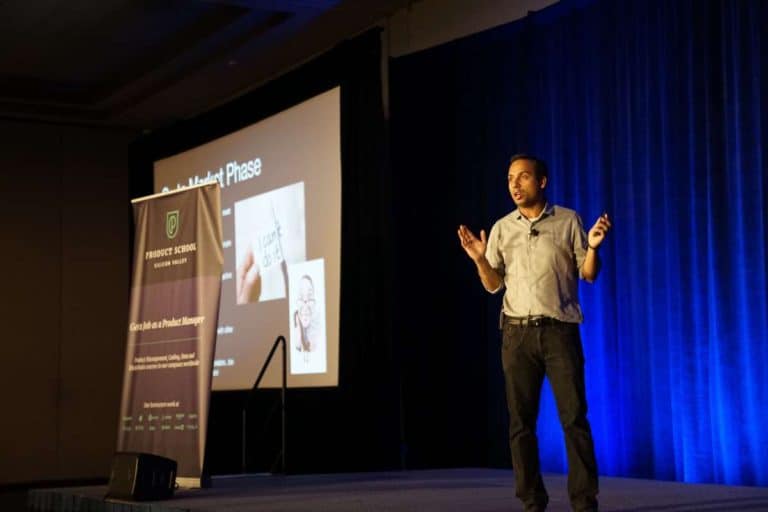
Informative Speech: Definition, and 155 Informative Speech Topics
What is an Informative Speech? An informative speech can be understood as one whose real aim seeks to thoroughly inform and educate a particular audience on a specific topic or subject, using genuine life application use cases. The bane of speech to inform topics bothers around the intricacies concerning a particular subject and those key…

The 10 Key Elements of a Great Presentation Explained
Whether we’re at a team meeting or making a presentation for an audience, we all have to speak in public once in a while. We can do it well, or we can do it badly, but one thing is sure: the result will affect what other people will think about us. That’s why public speaking…

Want to Stand Out? 15 Key Tips for an Awesome Presentation
Presentation skills are often taken for granted, and developing and practicing these skills will give you a huge advantage. There is nothing less engaging than a dispassionate speaker flipping through slides for a set amount of time. To stand out, follow these key steps and turn an okay presentation into an awesome one! The fifteen…

5 QUICK TIPS ON HOW TO GIVE AN EFFECTIVE MOTIVATIONAL SPEECH
This post is part 3 of a series of posts that where we will be sharing with you quick tips on how to deliver all types of speech that we mentioned in our most-read post on this blog, 10 Types of Speeches. Instead of just telling you that there is a motivational speech or an…

Public Speaking Exercises
Knowing how to communicate correctly is one of the skills that most favors professionals in all areas. Those who speak well can motivate, convince, inspire and influence people. And did you know that there are public speaking exercises capable of making you even better? Oratory helps give speeches, but it also serves to help in…

Consultative Speech Style Examples
Are you looking for examples of consultative speech style? Learn how this style can be used to effectively communicate, enhance public speaking and social skills, and assist with career development. In our article we will give contextual illustrations and tips on using this style in conversational situations! Examples of consultative speech include active listening, asking…

Want to create or adapt books like this? Learn more about how Pressbooks supports open publishing practices.
Transitions: Bridging Ideas for a Seamless Presentation
Photo by Alex Azabache , used under Unsplash license
Good transitions can make a speech more important to the audience because they feel they are being taken to a positive conclusion without having to travel a bumpy road. – Joe Griffith
Transitions
The difference between a novice speaker and an advanced speaker is in how they bridge the gap between ideas. Learning to use transitions effectively will help take your speaking to the advanced level. Transitions can be one word, a phrase, or a full sentence.
The audience is dying to know the relationship between ideas. Their brains are hard-wired for that. It’s more important when you are speaking than when you are writing because the listeners can’t go back – they have to get it when it happens. If the brain is bored, or gets tired because it’s overwhelmed, or gets confused – it can’t stay in that place, so it daydreams, creating its own interest. Speech Coach Max Dixon, Westside Toastmasters.
So, let’s get started. I have included various transition types for you to consider. These do little good if you read them and do not use them. This list works best if you read it now and then revisit it every time you write a speech.
- Let’s begin with…
- First, I’d like to share with you…
- Now that you’re aware of the overview, let’s begin with…
- Our first stop is…
- I will first cover…
- My first point covers…
- To get started, let’s look at…
The Order of Things
- After that…
- Next…
- Second thing…
- Our next stop is…
- Let me tell you about your next step.
Steve Jobs Commencement to Stanford University
Watch Steve Jobs’ 2005 Stanford Commencement Address (15 mins) on YouTube
Steve Jobs clearly previews his main points, “Today I want to tell you three stories from my life. That’s it. No big deal. Just three stories.” He flows smoothly between points with clear transitions.
- “The first story is about connecting the dots.”
- “My second story is about love and loss.”
- “My third story is about death.”
Source: Stanford. (2008, March 7). Steve Jobs’ 2005 Stanford Commencement Address [Video]. YouTube. https://youtu.be/UF8uR6Z6KLc
Between Similar Points
- In the same way…
- In addition…
- Likewise…
- Similarly…
Between Disagreeing Points
- Conversely…
- Despite this…
- The flip side of the issue…
- However…
- On the contrary…
- On the other hand…
- On the other side …
- Yet, we cannot ignore …
- The opposing argument …
- If we examine the opposite side, we see …
Introduce an example
- This is best illustrated by an example…
- For instance…
- Take the case of…
- For example…
- To understand this…
- Let me illustrate this by…
Introduce Research
- To make the point…
- As illustrated by…
- Case in point…
- To solidify this point…
- As researched by…
Cause and effect
- Therefore…
- Thus…
- Consequently…
- As a result…
- This is significant because…
- Hence…
- Resulting in…
- For that reason …
- The effect is…
Elaboration
- Also…
- Besides…
- What’s more…
- In addition/additionally…
- Moreover…
- Furthermore…
Transition to a Demonstration
- Let me show you how this works…
- Let me demonstrate this…
- Now that we’ve covered the theory, let’s see it in action …
- Next, I’d like to let you see this for yourselves…
Introducing Your Visual
- As you can see from this chart…
- I’d like you to notice that…
- The table indicates…
Questions as Transitions
- Now that you know the problem, what do you think will solve it?
- What do you think will solve this crisis?

Connective: A word or phrase that connects the ideas of a speech and indicates the relationship between them.
Transitions: A word or phrase that indicates when a speaker had finished one thought and it moving on to another.
Internal preview: A statement in the body of the speech that tells the audience what the speaker is going to discuss next.
Internal summary: A statement in the body of the speech that summarizes the speaker’s preceding point or points.
Signpost: A very brief statement that indicates where a speaker is in the speech or that focuses attention on key ideas.
From the Art of Public Speaking by Stephen Lucas
Thoughts from a Former Student
One thing I learned in class that made me a better speechwriter was to pay attention to the transitions. In our outlines, there was space for our main points, but also our transitions between them. At the beginning of the semester, I thought this was a waste of time planning out my transition for a speech and that I would just wing it the day of, but I soon realized how important they were. Transitions are like the finishing touches that make everything fall together in a speech.
You may have some interesting points or facts to give to your audience, but without transitions, you have nothing to connect your points and create a narrative. An audience is much more interested in a talk if there is a continuing idea or theme, and transitions help create this. I found this out by watching the other students in my class as they learned to use transitions as well. I loved the speeches that were clearly organized and had a common idea with transitions.
Zoe Lawless, Honors Public Speaking, University of Arkansas

Movement as Transition
Many people don’t think about movement as a type of transition, but it can be a very powerful way to help your audience transition between ideas.
- Setting out a visual or putting it away signals a change in ideas.
- Some speakers will imagine a baseball diamond laid out on the floor and move to each base throughout the speech. Their opening comment is at home plate. Point one is delivered on first, point two on second, and point three on third. They stand back on their home plate to deliver the final closing statements.
- One speaker that I met said he always has a special place that is his big idea place. He may move around during his speech but when he wants the audience to know it is an important point, he stands in the big idea place.
Silence as a Transition
John Chappelear, speech consultant, suggests that the use of silence can be powerful. It is powerful, but it is not easy. Being able to stand silently in front of a large audience for 15-45 seconds requires practice. Sometimes you can use silence as a way to let the audience catch up and think deeply about what you just said.
Transitioning Between Slides
- As the next slide shows…
- As you can see…
- Next, I will show you…
Transitioning to Visuals
- I’d like to direct your attention to…
- This diagram compares…
- Now, I’d like to illustrate this with…
Signaling the End is Near
- In conclusion…
- To sum it up…
- Lastly…
- In a nutshell…
- To recap…
- I’d like to leave you with…
- Finally, I’d like to say…
- The takeaway from all of this is…
- To summarise…

Moving to the Next Speaker
- I told you about the most credible theories about climate change, now John will share with you some examples of what you can do.
- I’m going to turn it over to Malachi, who will take you through the next few points.
- Next, Angie will come up and talk about…
- To help us understand this topic better, we have Beatrice, who will talk us through…
- Look to the next speaker and motion towards them as they walk to the podium, Twila will tell you more…
Problems with Transitions
These are some of the most common problems with transitions:
- Not planning out transitions and just “winging it.”
- Using fancy phrases inconsistent with the rest of the speech.
- Saying, “I have five points” and then having only four or miscounting the points.
- Overusing the same transitional phrase.
- Long pauses before transitions as the speaker tries to figure out what to say next.
Tricks on Smoothly Presenting Transitions
Now you have a list of ideas to use when you write your next speech, let’s talk about how to use transitions effectively. Speakers typically struggle as they end one point and seek to move to the next idea. This usually happens because of poor planning, not enough practice, and poor note management. Let’s talk about these one at a time. First, poor planning happens because a speaker does not put enough time and effort into writing the speech. Second, not enough practice happened because even when a speech is practiced, it is practiced with regards to getting through the main points and not about moving smoothly between points. Finally, poor note management. Let me give you some tricks.
- Make your notes large-larger than you think you need.
- Give ample space between main ideas so you can look down and see the gap and know another point is coming.
- On your notecards, make each main idea a different color.
- I usually have a “T” in a circle to remind me that this is a transition statement.
- Practice your speech twice by just reading the transition statements and the next sentence.
- The night before your speech, visualize how you will manage the transitions.
Key Takeaways
Remember This!
- Using transitions will help your speech flow smoothly.
- Practice using your transitions.
- Plan transitions for impact.
Attribution & References
Except where otherwise noted, this chapter is adapted from “ Transitions: Bridging Ideas for a Seamless Presentation ” In Advanced Public Speaking by Lynn Meade, licensed under CC BY 4.0 .
Allgood, E., & Ebersole, T. (Eds.). (2017). C OMM 2100 public speaking: A workbook for student success . Fountainhead Press.
Beqiri, G. (2018). Speech transitions: Words and phrases to connect your ideas. https://virtualspeech.com/blog/speech-transitions-words-phrases
Dugan, A. (2013, August 26). Speech transitions: Magical words and phrases. http://sixminutes.dlugan.com/speech-transitions/
Effective speech transitions, how to make your speech flow. https://franticallyspeaking.com/effective-speech-transitions-how-to-make-your-speech-flow/
Lawless, Z. (2020). Honors Public Speaking, University of Arkansas, Fayetteville. Used with permission.
Lucas, S.E. (2009). The art of public speaking. McGraw Hill.
Pace, P. (n.d). Bridge the gap–Speech transitions. https://westsidetoastmasters.com/article_reference/bridge_the_gap-speech_transitions.html#:~:text=%22I%20think%20body%20movement%20is,carries%20the%20audience%20with%20him.
Dynamic Presentations Copyright © 2022 by Amanda Quibell is licensed under a Creative Commons Attribution-NonCommercial 4.0 International License , except where otherwise noted.
Share This Book
Transition Words Examples: Enhancing Paragraphs and Essays

Think back to when you were first taught how to write essays. You were probably taught to organize your writing by starting each paragraph with a word like first , additionally , further , secondly , or third . These words are transition words .
Not all transition words are individual words. Sometimes, you need a whole phrase to make a smooth transition in your writing. These phrases are known as transition phrases . One transition phrase you were probably taught in school is in conclusion , a common way to begin an essay’s final paragraph . As you moved further in your academic career, you were probably taught to move away from these transition phrases and use subtler ones in your writing.
Here’s a tip: Want to make sure your writing shines? Grammarly can check your spelling and save you from grammar and punctuation mistakes. It even proofreads your text, so your work is extra polished wherever you write.
Your writing, at its best Grammarly helps you communicate confidently Write with Grammarly
Read on to learn all about the best transition words and phrases and when to use them, as well as common pitfalls you might encounter when incorporating transitions into your writing.
What are transition words?
Transition words are words that help writing move smoothly from one topic to another without confusing the reader. Words like however , next , or in conclusion prepare the reader by signaling that the topic is shifting. Transition words can introduce new or contrasting ideas, show cause-and-effect relationships, and form other connections between different sentences.
Types of transition words
Transition words present the writer’s thoughts in an orderly fashion, express nuance, clarify vagueness, forge connections, and demonstrate comparisons. Because they do so many different jobs, transition words are divided into eight distinct categories.
Transition words that introduce, agree, and add on
One of the most common ways transition words are used is to introduce new ideas and add onto topics that have already been explored in the piece.
Transition words and phrases in this category include:
- coupled with
- in addition (to)
- furthermore
- equally important
Take a look at a few ways you can use these kinds of transition words in a sentence:
- We have to consider the students’ needs, but the staff’s needs are equally important .
- First , preheat the oven. Second , sift together all your dry ingredients.
- The weather, coupled with the fast and loose itinerary, is the reason why I’m skipping the trip.
Transition words that oppose and limit
Transition words can also communicate opposition or limits to ideas and phrases. These words’ role is largely the opposite of the role played by the category above. Transition words that create opposition and limits include:
- on the contrary
- on the other hand
- notwithstanding
Here are a few examples:
- We managed to have a decent harvest despite the drought.
- I went to the seminar expecting a long, boring presentation but on the contrary , it was engaging and a lot of fun!
- While Shekani is a stickler for tradition, Mei gives every holiday party a new twist.
Cause and conditional transition words
These transition words show how one action led to a specific effect or how one circumstance is conditional on another. This category also includes words and transition phrases that illustrate the relationship between an intention and an action.
Cause and conditional transition words include:
- in the event of
- for fear of
- I hope that
A few examples of these words in sentences include:
- As long as there are pets that need homes, I’ll keep volunteering at the shelter.
- I brought extra socks in case we have to walk through puddles.
Effect and result transition words
Similar to the category above, these transition words demonstrate the result of a specific action. Here’s the difference between the two: When your sentence is focused on the cause of the effect, you’d use one of the transition words from the “Cause and conditional” category above. When the emphasis is on the effect itself, you would use a word from this “Effect and result” category that fits with the rest of your sentence.
For example, you might announce that you’ve postponed your barbecue by sending a group message that says “ because of the weather, I postponed the barbecue.” But you can communicate the same message with a slightly different focus by phrasing it as “it’s raining, so consequently I’ve rescheduled the barbecue.”
Words and phrases in this category include:
- as a result
- because the
- under those circumstances
- consequently
A few more examples of sentences that include these transition words are:
- It’s very humid outside, hence the condensation on the window.
- We stayed to see the whole show and consequently missed our train home.
- Miguel forgot to add the yeast to his dough and as a result , the bread didn’t rise.
Transition words that describe examples and support
Other transition words make it clear that one concept supports another, either by providing evidence, emphasizing it, or simply being an example. These words include:
- for this reason
- by all means
- in other words
- particularly
- significantly
Here are a few examples of these transition words at work:
- They had to slow down production, particularly of items with a low profit margin.
- I love all kinds of pizza, especially stuffed-crust pizza.
- The sequel’s tone was markedly different from the first movie’s.
Conclusion and summary transition words
These are the transition words that bring paragraphs , arguments, and pieces of writing to a close. They can also be used to summarize and restate ideas. These transition phrases and words include:
- in conclusion
- to conclude
- in any event
- in either case
- to summarize
Take a look at a few ways these words work in sentences:
- There were some surprises, but overall we had a great time.
- In conclusion , an upgraded security system isn’t a luxury; it’s a necessity.
Transition words for describing time
Another category of transition words deals with time, specifically when something happened or will happen in relation to another event. These words include:
- occasionally
- in the meantime
- in a moment
- momentarily
- at the present time
- all of a sudden
- every so often
Take a look at these transition phrases and words in action:
- I was walking through the mall when all of a sudden , I recognized my long-lost sister standing in line to buy a pretzel.
- I’d love to hang out at the coffee shop after work.
- Don’t leave the lobby—we’ll be with you momentarily .
Transition words for locations
Transition words can also draw a reader’s attention to where something is located, or the physical or spatial relationship between two things. This can mean where someone or something is literally located, or they can be used figuratively, like “Dan’s auto body shop is above Rick’s when it comes to quality and attention to detail.”
These words and phrases include:
- in front of
- adjacent to
You’ll notice that many of these words can also function as prepositions in a sentence. They can also function as transition words that are part of adverbial clauses . Here are a few examples of this kind of transition word at work:
- In the back , my cousin was grilling hamburgers.
- Among the students surveyed, more than half were excited to return to campus full-time.
- Next to the garage , they found a parking spot.
When to use transition words
Transition words illustrate relationships between other words and phrases. Although students are generally taught to use transition words at the beginning of sentences, this isn’t the only place they’re used.
Generally, a transition word is the crux of its sentence . This is the decisive point where the sentence’s core message is communicated. Not every sentence contains a transition word, but when one does, the transition word is usually critical to its question or statement.
Common mistakes writers make with transition words
Working with transition words isn’t always easy. Sometimes, especially when English isn’t your primary language, you may accidentally use the wrong word for the type of transition you’re making or use a word that doesn’t have quite the right connotation for your message. For example, you might say something like, “We could go out for burgers, pizza, sushi, or tacos. In either case, that works for me.” Either implies that there are only two choices, so in this scenario, it doesn’t fit because there are a total of four choices. (Here, the best way to phrase this would be “in any case.”)
Here are a few other commonly mistaken transition words:
- Adam and Jeremy came over for dinner.
- I made ribs and mac and cheese as well as a bagged salad.
- Although they offer personal training and classes, that gym is essentially an overpriced equipment store.
- The gym’s website explicitly states that no guest passes will be issued until further notice.
Another mistake writers sometimes make with transition words is using them in inappropriate contexts. As you saw in the lists above, some transition words and phrases feel more formal and academic than others. You can make your writing feel too formal—or too casual—by choosing a transition word that doesn’t fit your tone or the type of writing you’re doing. Here are a few examples of transition words that don’t fit their sentences:
- I just picked up a new dress, got my makeup done, and therefore , I’m ready to hit the club.
- In Kate Chopin’s The Awakening, Edna Pontillier felt inadequate whenever she spent time with Adele Ratignolle.
- I’ll be out of the office on Wednesday and consequently won’t be responding to emails.
See how they’re all either too formal or too casual for the messages they’re communicating? Word choice is crucial to effective communication, and that includes choosing the right transition for each sentence.
Make every transition a smooth one
Not sure if the transition word you chose is the right one? Run your writing through Grammarly and get suggestions for how to pick the perfect words and strike the appropriate tone that works best for what you’re communicating.

The Throughline Blog
Practical Media Training and Public Speaking Tips
7 Ways to Use Transitions During Your Presentation

“You are here!”
Those three words, found on maps everywhere from highway rest stops and shopping malls to tourist sites and hiking trails, capture your attention instantly, as they’re designed to do. They immediately orient you to where you are and help you spot, with ease, where you’re about to go.
There is a tool you can use during your presentation that plays a similar role – transitions. They serve as spoken you are here! signs, connecting distinct ideas, topics, or tones, and guiding your audience from one point to another.
Transitions can be a word, phrase, question, or statement. They can be subtle or overt, smooth or abrupt, gradual or purposefully shocking – whichever best serves your intention.
Without them, audiences can feel as lost as travelers without a map. As an added bonus, they also can help you to round up the stragglers. Used as a way to break the pattern , verbal transitions can reengage audience members whose attention may have wandered.
7 Ways to Use Transitions in Your Talk
1. to elaborate.
- “For example …”
- “In addition …”
- “A recent experience by one of my patients serves as an excellent illustration of this concept …”

2. Highlight a key message
- “The important point here is that …”
- “More than anything, we’ve learned that …”
3. Link similar ideas
- “In the same way …”
- “Just as Department A was slow to respond to the problem, a similar critique could be made of department B, because …”
4. Move from one section to another
- “That brings us to point number two.”
- “Now you know the challenges we are up against. I’m going to take the next 10 minutes to focus on how we are going to overcome them.”
5. Summarize or highlight relevance
- “So, what can we learn from all that?”
- “I’m telling you all this because …”
6. Introduce conflict
- “However …”
- “Critics see this issue differently …”
7. Indicate next steps or set up your call to action
- “Here’s our challenge …”
- “Where does that leave us today?”
- “You’ve heard the reasons why you need to reduce stress. Before you head out the door, I’m going to give you three simple, everyday actions that lead a more stress-less life.”

Recapturing Attention
Yes, we are sneaking in an eighth way verbal transitions can make for a better presentation. They have the power to snap your audience back to attention. It’s a strategy familiar to experienced radio hosts and podcasters, who use transitions to regain attention from members of their audience whose focus may have drifted.
Just imagine listening to the radio when the host says, “But even more than that, the most surprising thing I learned was ….” At that moment, are you really going to switch to a different station? Or are you going to stay tuned to hear the most surprising thing?
Lines such as these will recapture your wayward travelers:
- “But that’s not our real problem …”
- “For years, we’ve been told this is best the way to recover from heart surgery. I am here to tell you that’s wrong …”
- “I’m about to let you in on a secret …”
- break the pattern
- presentation skills training
- presentation tips
- speech transitions
- transitions
Share this article
- Share on Facebook
- Share on Twitter
- Share on LinkedIn
- Share on Email
STAY UP TO DATE WITH THE THROUGHLINE NEWSLETTER
Join the thousands of professionals who receive our email newsletter. Improve your public speaking and media interviewing skills—and enhance your career— by signing up.
Learn More About Our Training Services
Public speaking and media training custom courses designed to make you a more effective communicator.
More from the throughline blog

In public speaking tips Why Your Speech Should Have Two Closes

In public speaking tips 12 Ways to Boost Your Charisma (Study)

In public speaking tips Study: Your Bad Audio Makes You Sound Dumber
This website or its third party tools use cookies, which are necessary to its functioning and required to achieve the purposes illustrated in the privacy policy . If you want to know more or withdraw your consent to all or some of the cookies, please refer to the privacy policy. By closing this banner or continuing to browse otherwise, you agree to the use of cookies.
Have a language expert improve your writing
Run a free plagiarism check in 10 minutes, generate accurate citations for free.
- Knowledge Base
- Academic writing
- Transition Words & Phrases | List & Examples
Transition Words & Phrases | List & Examples
Published on May 29, 2020 by Jack Caulfield . Revised on August 23, 2023.
Transition words and phrases (also called linking words, connecting words, or transitional words) are used to link together different ideas in your text. They help the reader to follow your arguments by expressing the relationships between different sentences or parts of a sentence.
The proposed solution to the problem did not work. Therefore , we attempted a second solution. However , this solution was also unsuccessful.
For clear writing, it’s essential to understand the meaning of transition words and use them correctly.
Instantly correct all language mistakes in your text
Upload your document to correct all your mistakes in minutes

Table of contents
When and how to use transition words, types and examples of transition words, common mistakes with transition words, other interesting articles.
Transition words commonly appear at the start of a new sentence or clause (followed by a comma ), serving to express how this clause relates to the previous one.
Transition words can also appear in the middle of a clause. It’s important to place them correctly to convey the meaning you intend.
Example text with and without transition words
The text below describes all the events it needs to, but it does not use any transition words to connect them. Because of this, it’s not clear exactly how these different events are related or what point the author is making by telling us about them.
If we add some transition words at appropriate moments, the text reads more smoothly and the relationship among the events described becomes clearer.
Germany invaded Poland on September 1, 1939. Consequently , France and the United Kingdom declared war on Germany. The Soviet Union initially worked with Germany in order to partition Poland. However , Germany invaded the Soviet Union in 1941.
Don’t overuse transition words
While transition words are essential to clear writing, it’s possible to use too many of them. Consider the following example, in which the overuse of linking words slows down the text and makes it feel repetitive.
In this case the best way to fix the problem is to simplify the text so that fewer linking words are needed.
The key to using transition words effectively is striking the right balance. It is difficult to follow the logic of a text with no transition words, but a text where every sentence begins with a transition word can feel over-explained.
Receive feedback on language, structure, and formatting
Professional editors proofread and edit your paper by focusing on:
- Academic style
- Vague sentences
- Style consistency
See an example

There are four main types of transition word: additive, adversative, causal, and sequential. Within each category, words are divided into several more specific functions.
Remember that transition words with similar meanings are not necessarily interchangeable. It’s important to understand the meaning of all the transition words you use. If unsure, consult a dictionary to find the precise definition.
Additive transition words
Additive transition words introduce new information or examples. They can be used to expand upon, compare with, or clarify the preceding text.
Adversative transition words
Adversative transition words always signal a contrast of some kind. They can be used to introduce information that disagrees or contrasts with the preceding text.
Causal transition words
Causal transition words are used to describe cause and effect. They can be used to express purpose, consequence, and condition.
Sequential transition words
Sequential transition words indicate a sequence, whether it’s the order in which events occurred chronologically or the order you’re presenting them in your text. They can be used for signposting in academic texts.
Transition words are often used incorrectly. Make sure you understand the proper usage of transition words and phrases, and remember that words with similar meanings don’t necessarily work the same way grammatically.
Misused transition words can make your writing unclear or illogical. Your audience will be easily lost if you misrepresent the connections between your sentences and ideas.
Confused use of therefore
“Therefore” and similar cause-and-effect words are used to state that something is the result of, or follows logically from, the previous. Make sure not to use these words in a way that implies illogical connections.
- We asked participants to rate their satisfaction with their work from 1 to 10. Therefore , the average satisfaction among participants was 7.5.
The use of “therefore” in this example is illogical: it suggests that the result of 7.5 follows logically from the question being asked, when in fact many other results were possible. To fix this, we simply remove the word “therefore.”
- We asked participants to rate their satisfaction with their work from 1 to 10. The average satisfaction among participants was 7.5.
Starting a sentence with also , and , or so
While the words “also,” “and,” and “so” are used in academic writing, they are considered too informal when used at the start of a sentence.
- Also , a second round of testing was carried out.
To fix this issue, we can either move the transition word to a different point in the sentence or use a more formal alternative.
- A second round of testing was also carried out.
- Additionally , a second round of testing was carried out.
Transition words creating sentence fragments
Words like “although” and “because” are called subordinating conjunctions . This means that they introduce clauses which cannot stand on their own. A clause introduced by one of these words should always follow or be followed by another clause in the same sentence.
The second sentence in this example is a fragment, because it consists only of the “although” clause.
- Smith (2015) argues that the period should be reassessed. Although other researchers disagree.
We can fix this in two different ways. One option is to combine the two sentences into one using a comma. The other option is to use a different transition word that does not create this problem, like “however.”
- Smith (2015) argues that the period should be reassessed, although other researchers disagree.
- Smith (2015) argues that the period should be reassessed. However , other researchers disagree.
And vs. as well as
Students often use the phrase “ as well as ” in place of “and,” but its usage is slightly different. Using “and” suggests that the things you’re listing are of equal importance, while “as well as” introduces additional information that is less important.
- Chapter 1 discusses some background information on Woolf, as well as presenting my analysis of To the Lighthouse .
In this example, the analysis is more important than the background information. To fix this mistake, we can use “and,” or we can change the order of the sentence so that the most important information comes first. Note that we add a comma before “as well as” but not before “and.”
- Chapter 1 discusses some background information on Woolf and presents my analysis of To the Lighthouse .
- Chapter 1 presents my analysis of To the Lighthouse , as well as discussing some background information on Woolf.
Note that in fixed phrases like “both x and y ,” you must use “and,” not “as well as.”
- Both my results as well as my interpretations are presented below.
- Both my results and my interpretations are presented below.
Use of and/or
The combination of transition words “and/or” should generally be avoided in academic writing. It makes your text look messy and is usually unnecessary to your meaning.
First consider whether you really do mean “and/or” and not just “and” or “or.” If you are certain that you need both, it’s best to separate them to make your meaning as clear as possible.
- Participants were asked whether they used the bus and/or the train.
- Participants were asked whether they used the bus, the train, or both.
Archaic transition words
Words like “hereby,” “therewith,” and most others formed by the combination of “here,” “there,” or “where” with a preposition are typically avoided in modern academic writing. Using them makes your writing feel old-fashioned and strained and can sometimes obscure your meaning.
- Poverty is best understood as a disease. Hereby , we not only see that it is hereditary, but acknowledge its devastating effects on a person’s health.
These words should usually be replaced with a more explicit phrasing expressing how the current statement relates to the preceding one.
- Poverty is best understood as a disease. Understanding it as such , we not only see that it is hereditary, but also acknowledge its devastating effects on a person’s health.
Using a paraphrasing tool for clear writing
With the use of certain tools, you can make your writing clear. One of these tools is a paraphrasing tool . One thing the tool does is help your sentences make more sense. It has different modes where it checks how your text can be improved. For example, automatically adding transition words where needed.
If you want to know more about AI for academic writing, AI tools, or writing rules make sure to check out some of our other articles with explanations and examples or go directly to our tools!
Academic Writing
- Avoiding repetition
- Effective headings
- Passive voice
- Taboo words
- Deep learning
- Generative AI
- Machine learning
- Reinforcement learning
- Supervised vs. unsupervised learning
(AI) Tools
- Grammar Checker
- Paraphrasing Tool
- Text Summarizer
- AI Detector
- Plagiarism Checker
- Citation Generator
Cite this Scribbr article
If you want to cite this source, you can copy and paste the citation or click the “Cite this Scribbr article” button to automatically add the citation to our free Citation Generator.
Caulfield, J. (2023, August 23). Transition Words & Phrases | List & Examples. Scribbr. Retrieved April 15, 2024, from https://www.scribbr.com/academic-writing/transition-words/
Is this article helpful?

Jack Caulfield
Other students also liked, using conjunctions | definition, rules & examples, transition sentences | tips & examples for clear writing, how to write topic sentences | 4 steps, examples & purpose, "i thought ai proofreading was useless but..".
I've been using Scribbr for years now and I know it's a service that won't disappoint. It does a good job spotting mistakes”
Using Transition Phrases to Keep Your Audience Engaged in Your Presentation
- By THE NEWMAN GROUP INC.
Many won’t be able to fight the compulsion to take a look at their smart phones. So how should you keep your audience included and involved in the discussion?
Transition Expressions
Savvy speakers use Transition/Linking Phrases as the magic that binds their musings so they can move consistently from one point to another.
It’s important to compose your presentation so everything underpins one principle thought. Create a few key headlines to support that idea and then further expound with realities, accounts, contextual investigations, visuals and other evidence.
Also including transitions to connect sentences and key messages will enable the audience to move from thought to thought. Transitions can represent the moment of truth of your presentation. Linking phrases can transform your presentation into a unified whole.
Transitions can likewise be tricky. You have to use words other than “yet,” “in any case,” and “furthermore.” The words you use will fill in as punctuation marks and entice the audience to listen to your next points. Continue giving them the road map to follow all through your presentation.
After you’ve presented your main theme, consider the following transition phrases to get started:
- I’d prefer to support____from three principle viewpoints…
- I’d like to discuss____from these three central perspectives…
- Let’s cover____with three essential elements as a top priority…
Getting From Here to There
Launch your first key message with an expression that says it’s your first point:
- First, lets start with…
- My first point covers…
- I will speak first about…
Stick to that “chunk” of content and don’t jump to your other key messages until you finish up with a phrase like:
- Moving on to our next area of interest…
- Now, I’d like to examine…
- Our next important component is…
Or, it could simply be that it’s drawing near to lunch and people are eager. Whatever the explanation, you must recover their attention. So pause, and allow them to get back in sync with you.
When you are done introducing your key messages, rehash them, starting with a phrase such as, “I’ve just covered the three most important points about… ”
The Closer
Now the audience is prepared for your closing comments. Please don’t use, “in conclusion …” because that’s the signal you’ve arrived at the finish of your presentation and it’s alright to intellectually tune out.
Instead, keep them tuning in with a more compelling phrase such as:
- What I need you to take away from…
- The thought I’d like to leave you with…
- I strongly recommend that…
Call to Action
Don’t simply state, “Thanks for listening” when you’re done. Preface that with what you need the audience to do after the presentation. Include a call to action:
- What I’d like to ask you to do now…
- Can I request your help in…
- My aim today is to convince you to take the next step and…
Transition phrases are the audience’s lifeline to your presentation. Choose them carefully with the goal that your audience knows precisely where you are at any point in time. They will also help you to keep you on track, so you don’t start wandering off topic and lose your own sense of direction.
Are there transition phrases that you use in your presentations that you find especially valuable? If so, leave us a comment below. We’d love to know what they are.
Share this post:
- business presentation skills , executive presentation skills , Linking phrases , Presentation Skills Training , Presentations , Public speaking , Transition phrases
Leave a Comment Cancel reply
Your email address will not be published. Required fields are marked *
Save my name, email, and website in this browser for the next time I comment.
Subscribe for Free Tips
Enter your contact information below to subscribe to our blog and receive your free copy of our 46-page guide Presenting Yourself and More….
Connect with Newman Group
The newman group is . . ..
The Newman Group is a recognized leader in guiding business professionals, celebrities and authors to improve their communications skills in presentations and media interviews.
Our highly skilled and experienced professionals have the expertise in media and presentation training to meet any business situation — from helping an executive to prepare for the challenge of talking to a reporter during a business crisis to presenting a group of investors during an IPO or keeping a celebrity spokesperson on point.
- accents (1)
- body language (2)
- bully in the audience (1)
- business etiquette (2)
- charism (1)
- executive presence (1)
- famous quotes (1)
- foreign language (1)
- grammar (2)
- job interviews (3)
- listening skills (1)
- media interviews (11)
- media/message coaching (7)
- memorable speeches (2)
- mentoring (1)
- networking (1)
- overcoming fear (3)
- overcoming objections (1)
- personal brand (2)
- personal charisma (5)
- powerful presentation (3)
- PowerPoint (1)
- presentation disaster (2)
- presentation skills (132)
- professional image (3)
- professional relationships (1)
- q&a (1)
- self confidence (2)
- small talk (1)
- social media (1)
- table manners and etiquette (2)
- Uncategorized (77)
- virtual presentations (9)
- voice mail (1)
- where to sit (1)
- white lie (1)
404 Not found
The Professional Writer’s List of Transition Words & Phrases
Updated: July 24, 2019
Published: November 27, 2018
Talking to someone who constantly jumps from one unrelated topic to the next is a strange experience. The entire conversation seems random and unfocused, which makes it hard to stay engaged, and easy to say, “I gotta go”.

Needless to say, it’s annoying to talk to people who try to engage you with choppy conversations -- and it’s just as irritating in writing. If you abruptly hop from one point to another, you’ll throw your readers off and confuse them, increasing the likelihood that they’ll abandon your piece.
To avoid losing your audience’s attention when moving from one point to another, you need to weave your ideas and thoughts together with transitions. These logical connections between different sections in your writing give your audience a train of thought to follow, boosting the odds that they’ll pay their undivided attention to your piece.
To help you thread your writing together and better engage an audience, we’ve compiled a list of the best transition words and phrases to include in your pieces. Whether you want to know the best transitions for linking separate paragraphs together or ending paragraphs with an emotional punch, we’ve listed some effective options below.

The Professional Writer’s List of Transition Words and Phrases
Additional evidence.
To bolster your ideas with additional support or information, consider using the following transitions:
- In addition
Here’s an example of this type of transition in use:
“Early adopters can provide a lot of helpful feedback about a product’s or technology’s pros and cons. They also inject these companies with revenue that funds the research and development needed to enhance the product or technology enough to gain widespread adoption.”
To compare multiple thoughts or ideas, consider using the following transitions:
- By the same token
- In a similar fashion
“ Just like Facebook Instant Articles, which lets users read articles without leaving Facebook’s mobile app, Google will host AMP pages on its own servers and serve up the content directly on its site.”
To contrast multiple ideas or thoughts, consider using the following transitions:
- On the other hand
- At the same time
- Even though
- In spite of
“As jobs become more specialized in today’s workforce, it seems logical to hone a specific skill set, especially during school. But only learning the skills that match the exact requirements of a job today might not prepare you for your job tomorrow.”
To describe something that happened, happens, or will happen during a certain time frame, consider using the following transitions:
- Immediately
- Simultaneously
“ Nowadays , writing a letter can seem completely archaic. I mean, do people even send mail anymore? Or do they only communicate through email and messaging?”
To describe two things happening at the same time, consider using the following transitions:
“Clifford sat alone and depressed in detention. Meanwhile , his friends were having a blast playing football at the common ground.”
Clarification
To spell out a complicated concept, consider using the following transitions:
- In other words
- To rephrase
- To put it another way
“The term “Bitcoin mining” is really just a clever metaphor for the intricate proof-of-work system that gives people bitcoins in exchange for validating the cryptocurrency’s transactions. In other words , the reason why people mine Bitcoin and how they actually do it is complicated.”
Exemplification
To help your readers grasp an abstract concept, try using the following transitions to provide them with a concrete example:
- To illustrate
- To demonstrate
- For instance
- For example
“Even if experiences end like your relationships with material objects do, they’ll always be a part of your story, allowing you to bond with other people who’ve shared similar experiences. For instance , who do you think you’ll connect with on a deeper level -- someone who also studied abroad in Scotland during college or someone who wears the same Apple Watch as you?”
Identification
To highlight a distinct attribute of your idea or thought, consider using the following transitions:
- Specifically
- Particularly
“If brands truly want to rise from the ashes of the retail apocalypse, they must stay laser-focused on adapting to the evolution of this technology and their customers' preferences. More specifically , they need to embrace change and prepare for the upcoming trends that will transform their industry in 2019.”
To emphasize a thought or idea you just previously stated, consider using the following transitions:
- More importantly
“When the World Wide Web launched in 1991, most people thought it would fizzle out in a few years. Experts considered it to be a shiny, new fad that no one was really using. In fact , only six countries in the world had more than one internet user per 100 people that year.”
To spotlight the root cause of something happening, consider using the following transitions:
“Strong call-to-actions are a crucial element of a persuasive business letter -- because if you don't tell your reader what to do next, you might as well have never written your letter in the first place.”
To call attention to the consequence of the root cause of something, consider using the following transitions:
- As a result
- Subsequently
- Consequently
“A lot of professionals overlook the importance of writing high-quality business letters because they seem outdated. As a result , most people don’t actually know how to write one.”
To flow from one related topic to another, try referencing the previous topic by using the following transitions:
- With this in mind
- On the subject of
- Considering
“Inlinking with clear, concise, and relevant anchor text can reinforce the topical connection between certain posts in Google’s eyes and help all of those posts rank better. With this in mind , anchor text is nothing to gloss over, so let’s learn more about what exactly anchor text is, why it’s important, and the different types of anchor text."
Summary/Conclusion
To summarize or conclude a paragraph, consider using the following transitions:
- In a nutshell
- To put it briefly
“Traveling make you more open to new experiences, which increases your willingness to try new things in the future. It also increases your brain’s capacity and attentiveness in future situations that are new and challenging. In a nutshell , traveling strengthens your desire and ability to learn new skills.”

Don't forget to share this post!
Related articles.
![transition phrases presentation How to Write a Memo [Template, Examples & HubSpotter Tips]](https://blog.hubspot.com/hubfs/how-to-write-memo_0.webp)
How to Write a Memo [Template, Examples & HubSpotter Tips]
![transition phrases presentation How to Write a Memo [Template & Examples]](https://blog.hubspot.com/hubfs/how-to-write-memo_0.webp)
How to Write a Memo [Template & Examples]

9 Simple Ways to Write a Good Introduction Sentence

Comma Rules for Clear Writing (with Examples)

How to Write an Introduction: A Simplified Guide

How to Become a (Better) Editor: 13 Editorial Tips
![transition phrases presentation How Long Should Blog Posts Be in 2021? [New Data]](https://blog.hubspot.com/hubfs/how-long-blog-posts.webp)
How Long Should Blog Posts Be in 2021? [New Data]

How to Improve Your Writing Skills and Escape Content Mediocrity (Infographic)

How The Flesch Reading Ease Test Can Help You Write Clear and Concise Copy

HubSpot's Guide to Becoming a Better Writer
Save time creating blog posts with these free templates.
Marketing software that helps you drive revenue, save time and resources, and measure and optimize your investments — all on one easy-to-use platform
- RMIT Australia
- RMIT Europe
- RMIT Vietnam
- RMIT Global
- RMIT Online
- Alumni & Giving

- What will I do?
- What will I need?
- Who will help me?
- About the institution
- New to university?
- Studying efficiently
- Time management
- Mind mapping
- Note-taking
- Reading skills
- Argument analysis
- Preparing for assessment
- Critical thinking and argument analysis
- Online learning skills
- Starting my first assignment
- Researching your assignment
- What is referencing?
- Understanding citations
- When referencing isn't needed
- Paraphrasing
- Summarising
- Synthesising
- Integrating ideas with reporting words
- Referencing with Easy Cite
- Getting help with referencing
- Acting with academic integrity
- Artificial intelligence tools
- Understanding your audience
- Writing for coursework
- Literature review
- Academic style
- Writing for the workplace
- Spelling tips
- Writing paragraphs
- Writing sentences
- Academic word lists
- Annotated bibliographies
- Artist statement
- Case studies
- Creating effective poster presentations
- Essays, Reports, Reflective Writing
- Law assessments
- Oral presentations
- Reflective writing
- Art and design
- Critical thinking
- Maths and statistics
- Sustainability
- Educators' guide
- Learning Lab content in context
- Latest updates
- Students Alumni & Giving Staff Library
Learning Lab
Getting started at uni, study skills, referencing.
- When referencing isn't needed
- Integrating ideas
Writing and assessments
- Critical reading
- Poster presentations
- Postgraduate report writing
Subject areas
For educators.
- Educators' guide
- Signal and transition words
- Oral presentations: Part 1-4
- Oral presentations basics
- Academic poster presentations
Still can't find what you need?
The RMIT University Library provides study support , one-on-one consultations and peer mentoring to RMIT students.
- Facebook (opens in a new window)
- Twitter (opens in a new window)
- Instagram (opens in a new window)
- Linkedin (opens in a new window)
- YouTube (opens in a new window)
- Weibo (opens in a new window)
- Copyright © 2024 RMIT University |
- Accessibility |
- Learning Lab feedback |
- Complaints |
- ABN 49 781 030 034 |
- CRICOS provider number: 00122A |
- RTO Code: 3046 |
- Open Universities Australia

IMAGES
VIDEO
COMMENTS
General vocabulary for presentations. Sometimes, the smallest changes in your presentations can make the biggest differences. One of them is to learn a few phrases that give you confidence during your speech. Here are some important verbs to get you started: To outline. To clarify. To highlight. To emphasize.
Speech transitions are words and phrases that allow you to smoothly move from one point to another so that your speech flows and your presentation is unified. This makes it easier for the audience to understand your argument and without transitions the audience may be confused as to how one point relates to another and they may think you're ...
In other words, here's how transition words, phrases, and sentences match up to a speech structure: 1st main structural unit: transition with a sentence. 1st rhetorical sub-unit: transition with ...
Craft a list of transitional words and phrases: To ensure smooth and seamless transitions between your ideas, compile a list of words and phrases that can serve as connectors. Examples include "however," "in addition," and "on the other hand.". Identify logical connections: Assess the flow of your speech and identify the logical ...
2. Incompatible Transition This faulty transition occurs when a speaker uses a transition word or phrase that does not match the relationship. (e.g., they start with the word "however", but they follow it with an example) 3. Tangential Transition Transitional phrases like "That reminds me…", or "As an aside…" are dangerous
Good transitional sentences and phrases are simple, elegant and clear. They help your audience follow you from one point to the next one. In today's article, you will learn the "Summarize and Switch" transition phrase. You will learn the same phrase I use in most of my presentations, keynotes and training.
A word or phrase that connects the ideas of a speech and indicates the relationship between them. Transitions: A word or phrase that indicates when a speaker had finished one thought and it moving on to another. Internal preview: A statement in the body of the speech that tells the audience what the speaker is going to discuss next.
Here are some examples of transitional phrases you can use in your presentations: "Moving on to our next topic…". "Now, let's take a look at…". "Next up…". "Let's switch gears and talk about…". "In addition to reducing your risk of chronic diseases, a healthy diet can also improve your mood and energy levels.".
Let us look at different types of speech transition words and phrases: 1. Transition Between Similar Ideas. As the name suggests, this transition connects two similar ideas by showing where one ends and the next begins. This type of speech transition examples includes: likewise, similarly, in a similar way, etc. 2.
Transitional phrases like "That reminds me…", "Ironically…", or "As an aside…" are dangerous because they often lead to an off-topic diversion which blurs the focus of the speech and wastes time for you and your audience. Just. Don't. Do. It. Missing Transition. This faulty transition is the most common of all.
Speech transition help connect the previous idea to the next, keeping the audience engaged. In conversations and presentations, it is critical to maintain a flow and make sense, that one or two words or phrases are paramount to achieve that. Speech transitions help relate and connect your ideas and help your audience to follow and understand ...
Also including transitions to connect sentences and key messages will help the audience move from idea to idea. Transitions can make or break your presentation. Linking phrases can turn your presentation into a unified whole. Transitions can also be tricky. You need to use words other than "but," "however," and "in addition."
Transitions. The difference between a novice speaker and an advanced speaker is in how they bridge the gap between ideas. Learning to use transitions effectively will help take your speaking to the advanced level. Transitions can be one word, a phrase, or a full sentence. The audience is dying to know the relationship between ideas.
Transition words and phrases are essential tools for improving your writing style and coherence. They help you connect ideas, sentences, and paragraphs smoothly and logically. In this guide, you will learn how to use transition words and phrases with examples from Grammarly. Whether you want to start a new paragraph, introduce a contrast, or conclude your essay, you will find the right ...
7 Ways to Use Transitions in Your Talk. 1. To elaborate. "For example …". "In addition …". "A recent experience by one of my patients serves as an excellent illustration of this concept …". 2. Highlight a key message. "The important point here is that …".
Example sentence. Transition words and phrases. Addition. We found that the mixture was effective. Moreover, it appeared to have additional effects we had not predicted. indeed, furthermore, moreover, additionally, and, also, both x and y, not only x but also y, besides x, in fact. Introduction.
Transitional words and phrases can create powerful links between ideas in your paper and can help your reader understand the logic of your paper. However, these words all have different meanings, nuances, and connotations. Before using a particular transitional word in your paper, be sure you understand its meaning and usage completely and be sure…
Also including transitions to connect sentences and key messages will enable the audience to move from thought to thought. Transitions can represent the moment of truth of your presentation. Linking phrases can transform your presentation into a unified whole. Transitions can likewise be tricky.
right, yeah. Good. Good. So So summarize. Yeah, yeah. additionally that's an that's a good, you know, I would says three aspects, four aspects that throughout the presentation, if him keep these in, in your mind, it's, it's, EGO would say, it's going to help a lot.
Altogether. After all. Ultimately. Here's an example of this type of transition in use: "Traveling make you more open to new experiences, which increases your willingness to try new things in the future. It also increases your brain's capacity and attentiveness in future situations that are new and challenging.
The use of signaling and transition words (also referred to as Signposting), helps you show your audience how the presentation is structured and how ideas relate to each other. Examples of useful signals and transition statements for oral presentations are listed below. Use these examples as a resource next time you are preparing and practicing ...
Using transitional phrases is a way to guide your reader from one thought to the next. These are used within your paragraphs as you move from one idea to another as well as when you need to move your reader to the next paragraph. Think of transitions as the links that help your writing flow. You can also think of a transition as a sort of ...